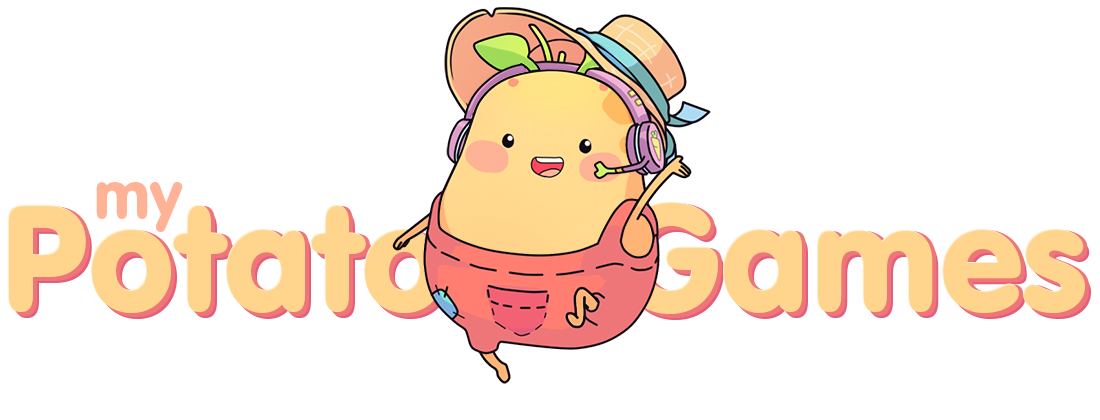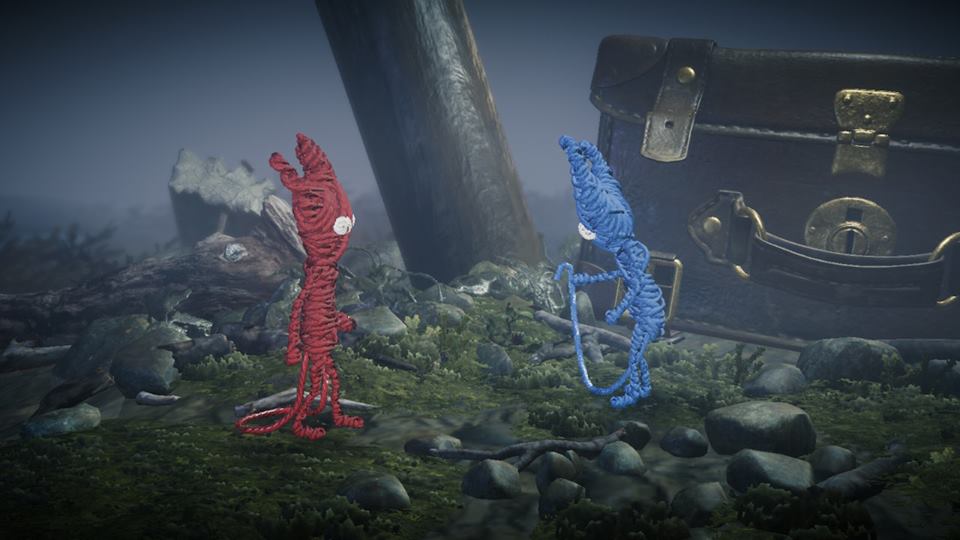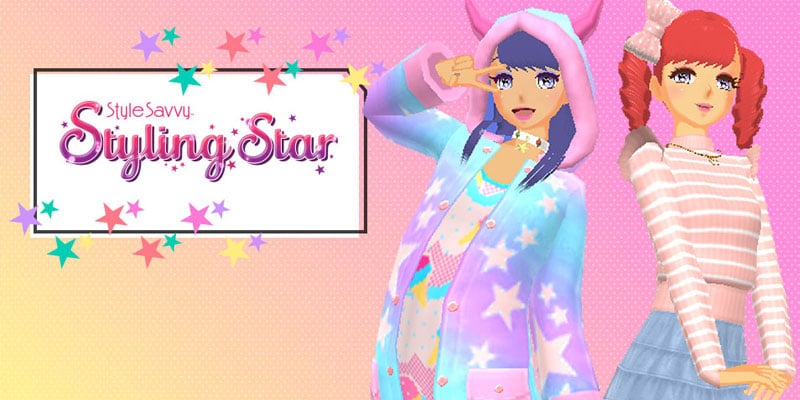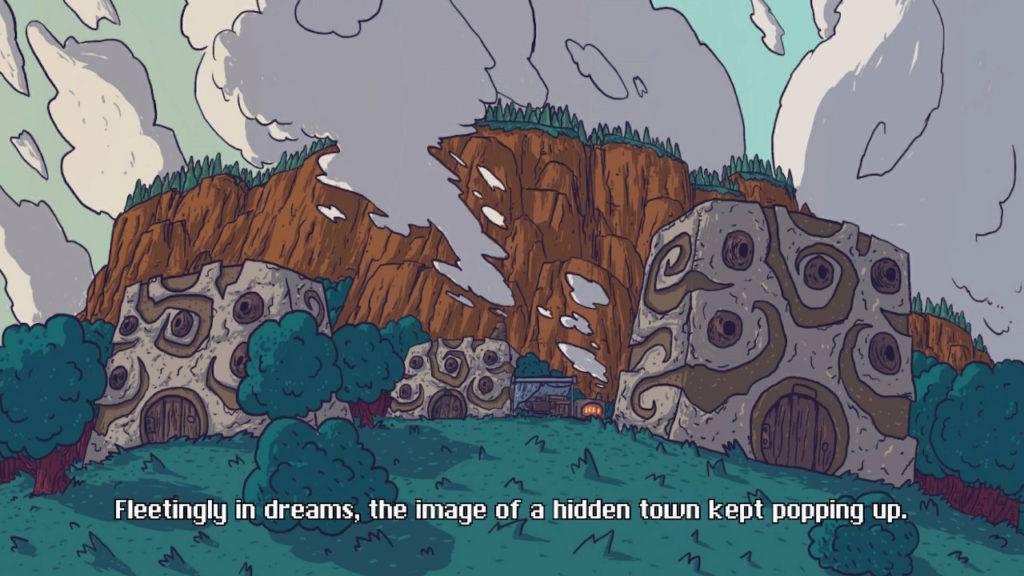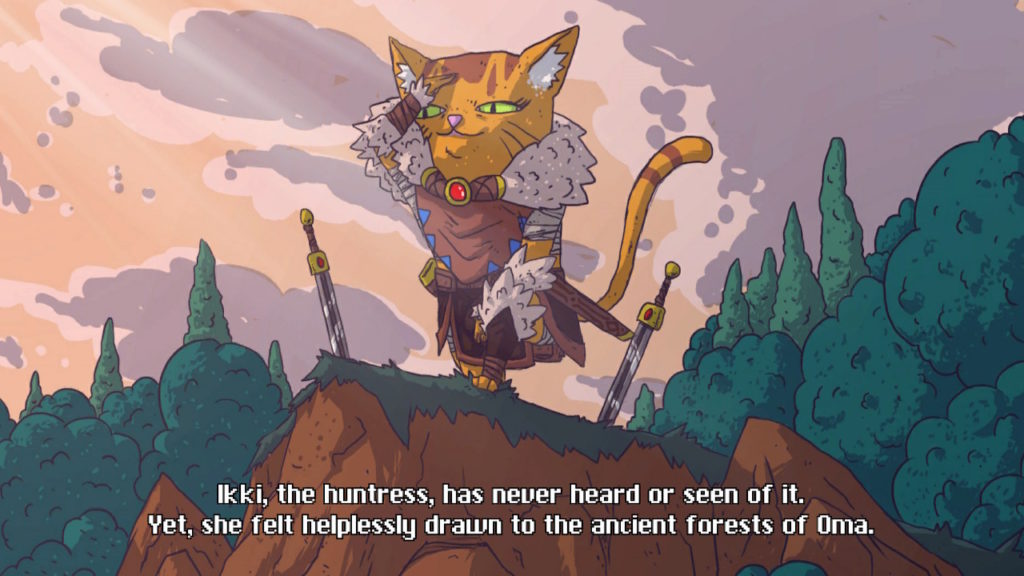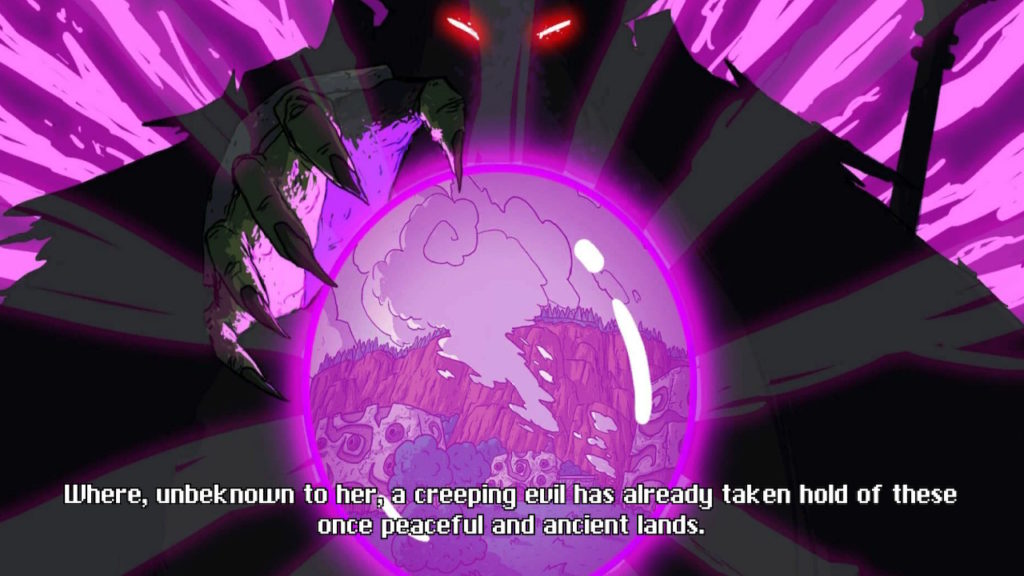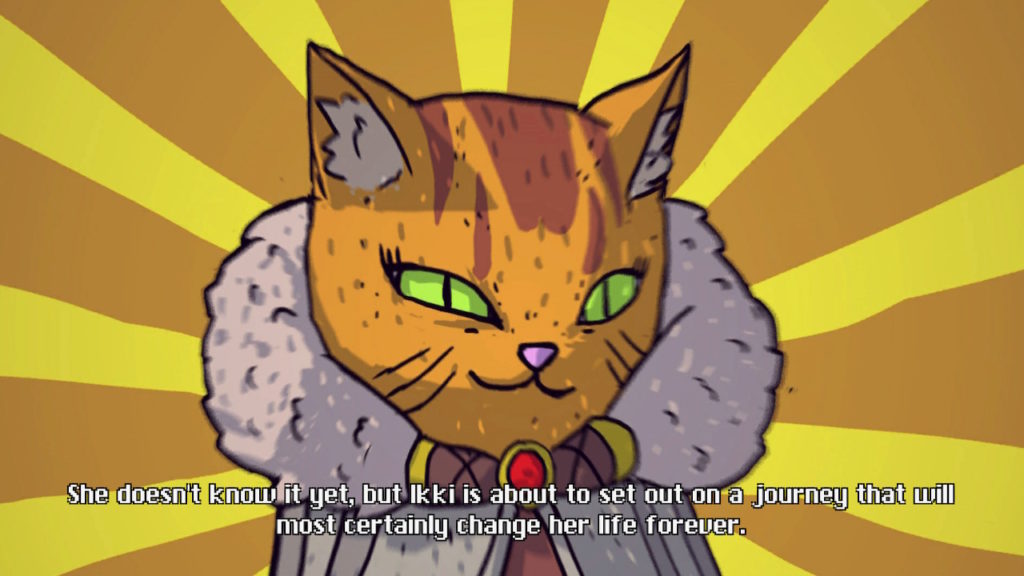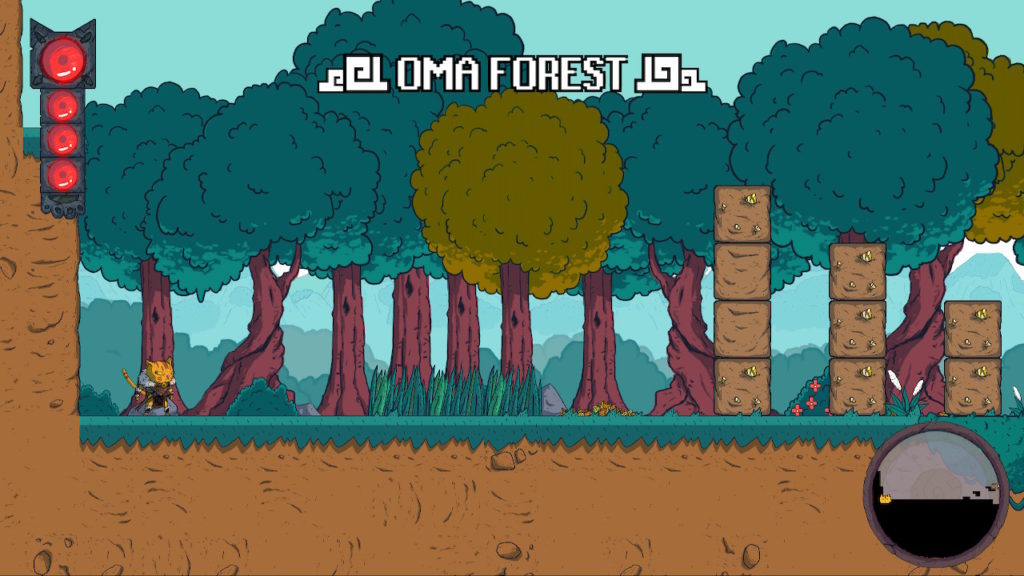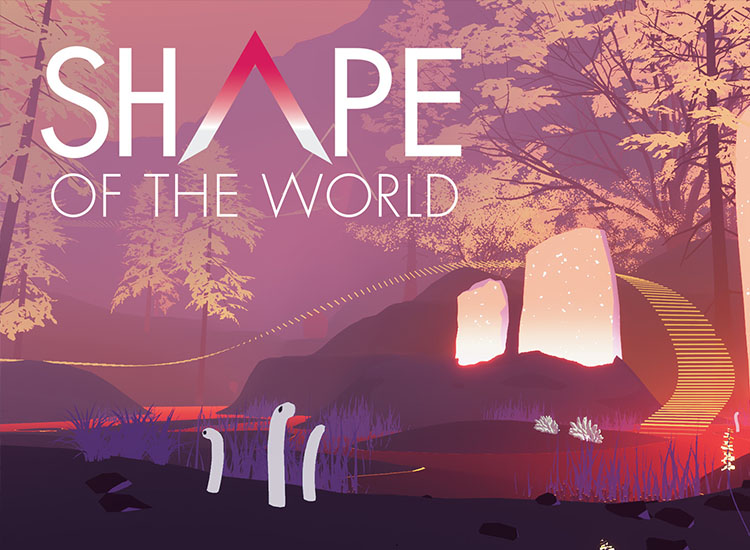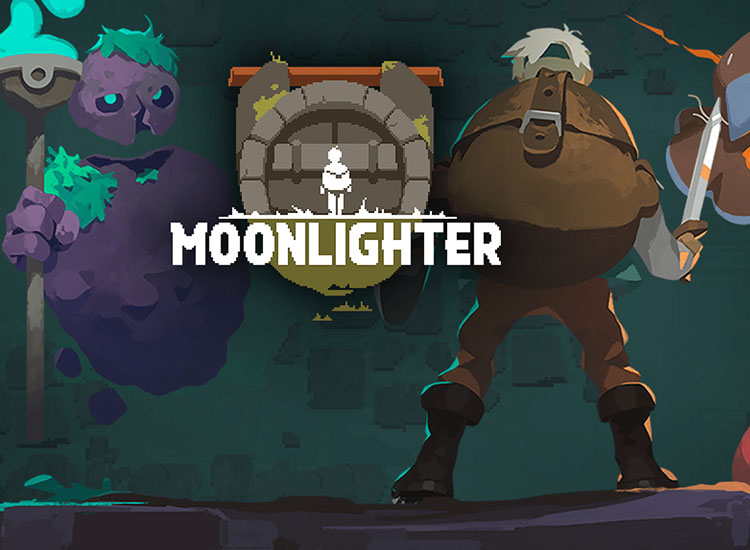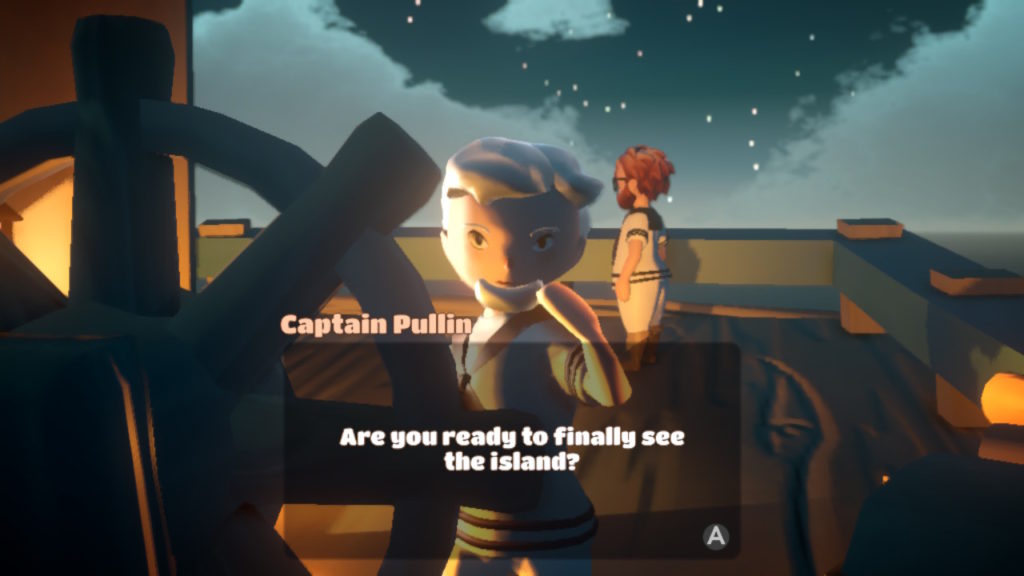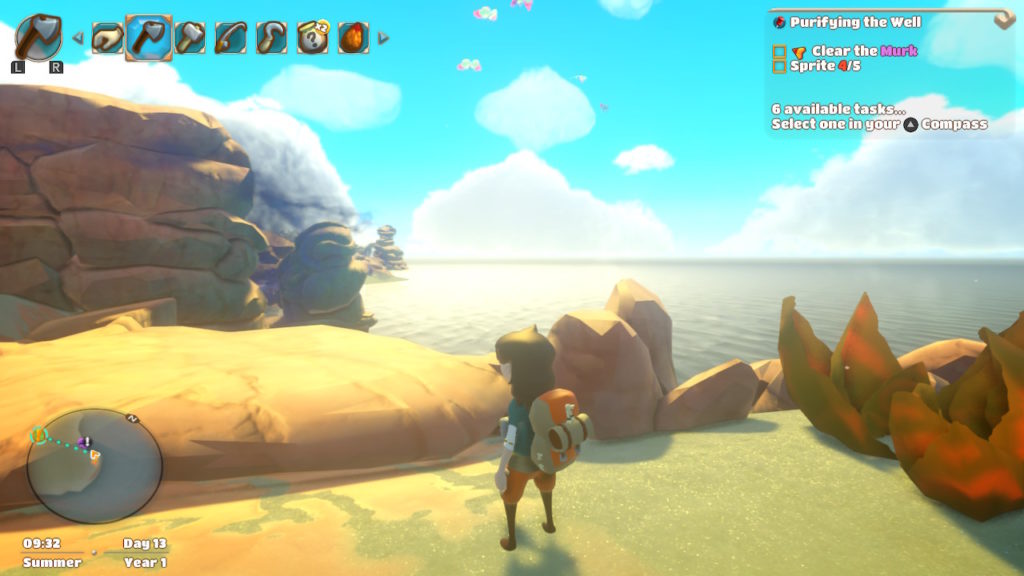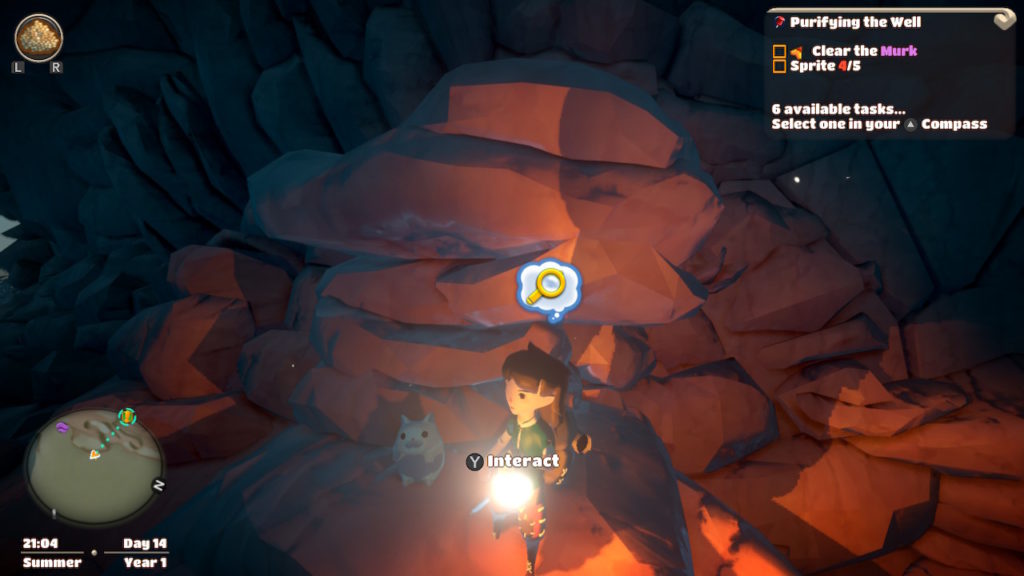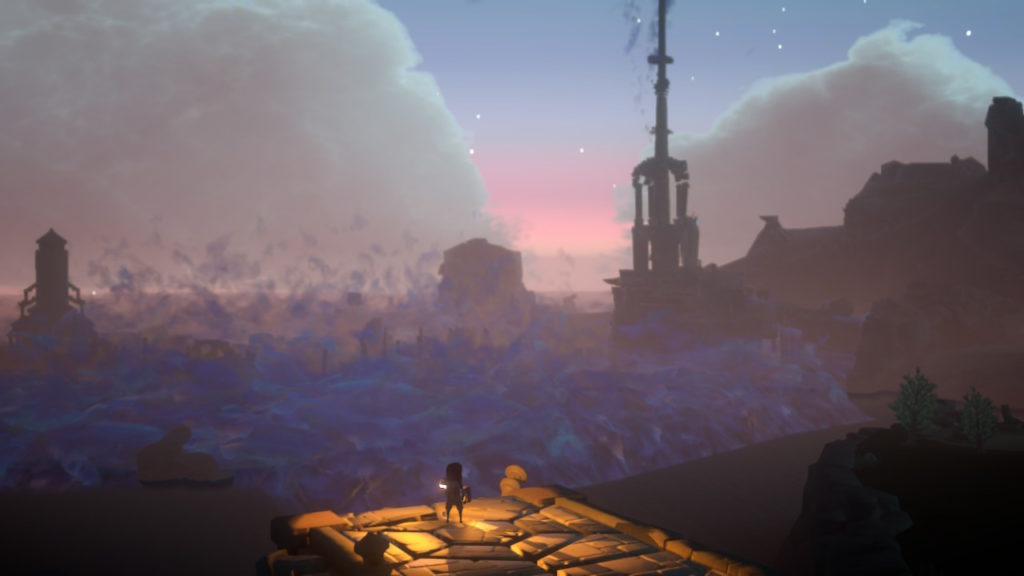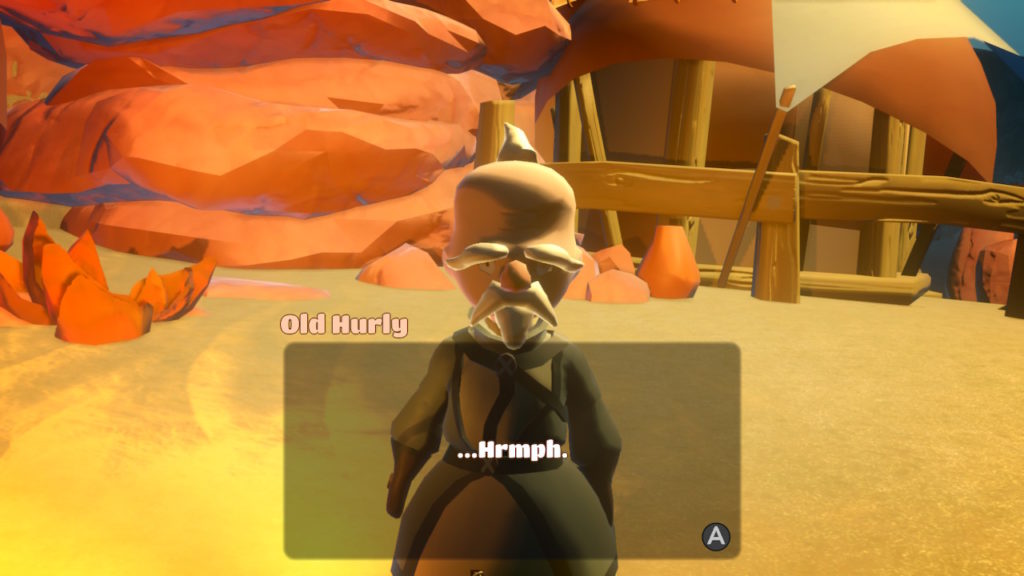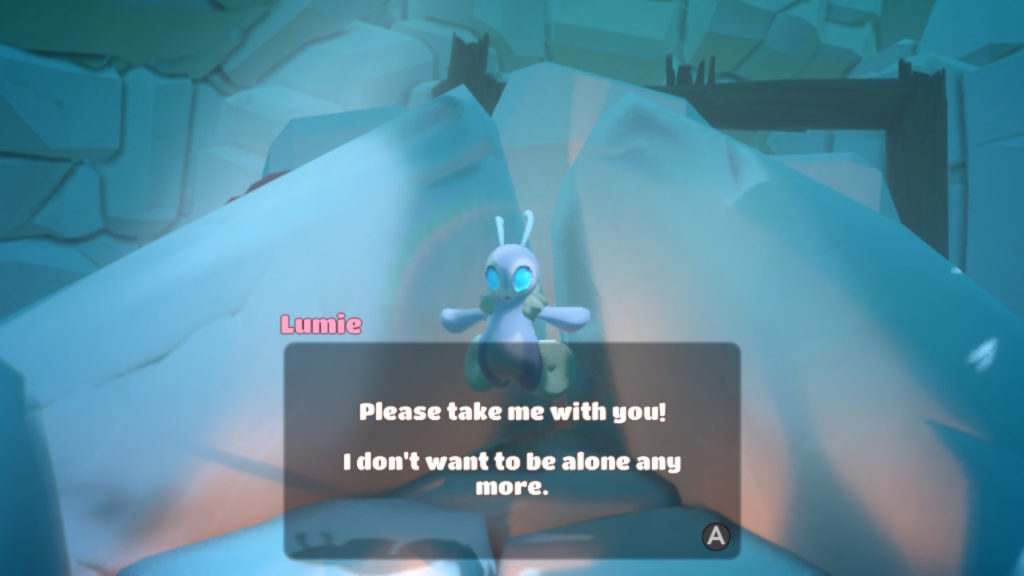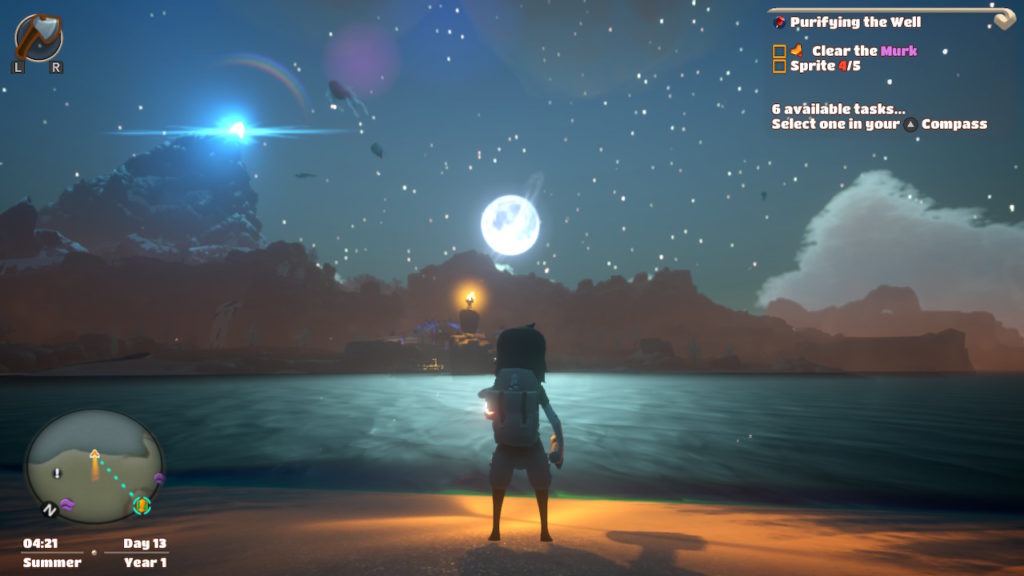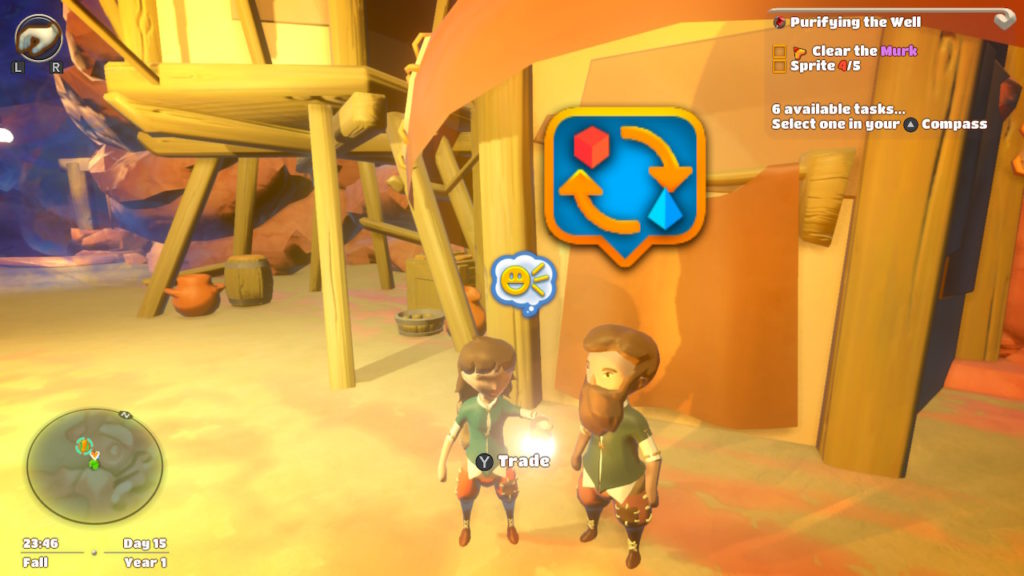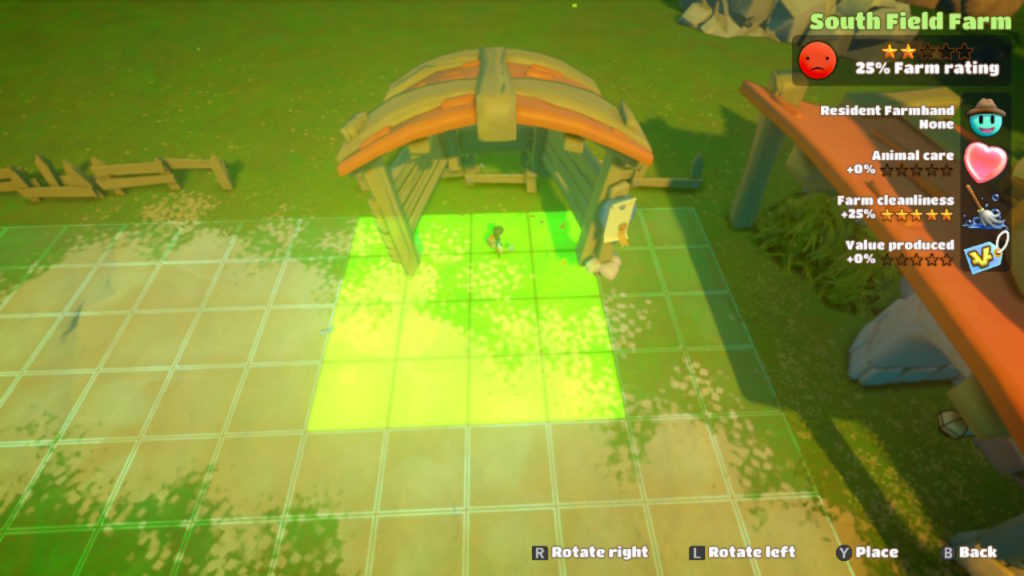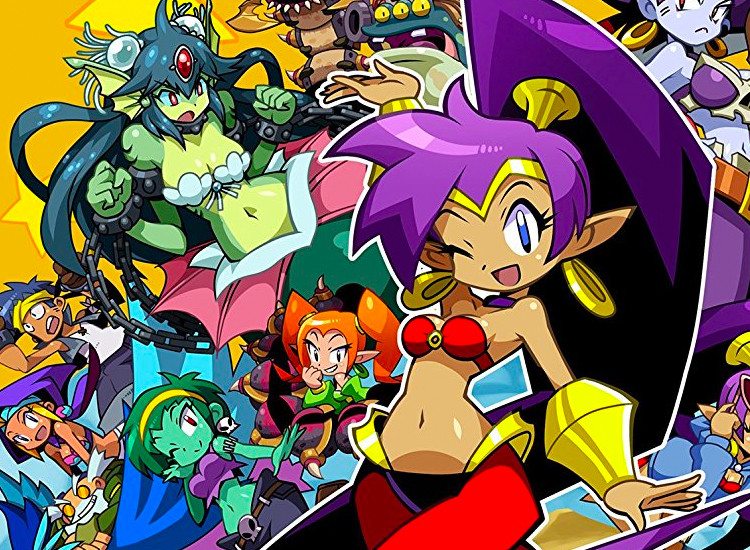Reviews
- Home
- Reviews
Mar 26, 2019Reviews
Unravel Two was released in June 2018 for the PS4 and Xbox One. Now you can play it on the Nintendo Switch since March 22nd, 2019, which is the version I will be reviewing today. This puzzle platformer was developed by Coldwood Interactive and published by EA. In this sequel, you can now play cooperatively, local only, with a friend! You play as anthropomorphic beings made of yarn, called Yarnys, that are attached together. This adds so much more depth to the gameplay with unique challenges. Unravel Two is the perfect game to play with someone as each character is needed to work together.
The Story
The plot isn’t too obvious in this game but the message is; making connections and building friendships. Throughout the levels, you will find in the background faded silhouettes of two children running away together. It is not clear whether the two kids are being chased by adults or why but that the Yarnys are lending them a hand. The scenes can be interpreted as current events and we are like spirit guides that they cannot see or that we are simply putting memories back together again and are witnessing events that have long-since passed.
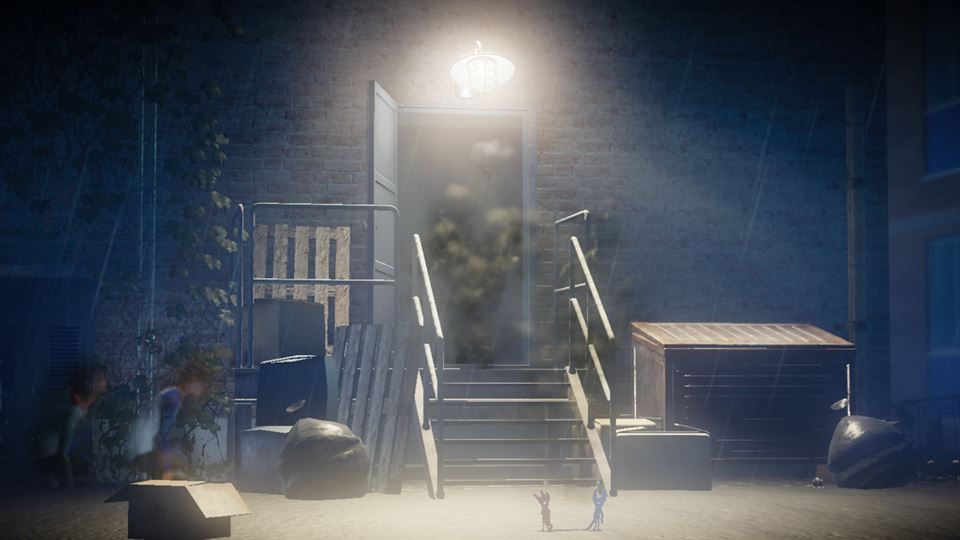
The children hiding behind garbage as adults look for them. The beginning of the game starts with a stormy night as we see the red Yarny falling overboard from a ship. As you land on an island, you meet another blue Yarny (in a similar situation) that you immediately form a bond with. You end up in a lighthouse which becomes your hub world to access all seven chapters. After completing a level, color, light and parts of the paintings on the walls of the lighthouse start to fill. I believe this is from the pieces of light that you find scattered throughout those said levels. It seems as though the more time you spend together, the more you start to build a home for yourself.

Adding pieces to the paintings in the lighthouse. Gameplay
Being tied together can seem like a pain if you’re thinking of The Legend of Spyro: Dawn of the Dragon, like I was but it’s far from it. If one character makes a successful jump to another platform, the other one can either attempt to do the same thing or simply tug on the yarn linking both of you together to rejoin your partner. It can look like rock-climbing if you’re faced with a ledge below or like climbing a spider’s web if you need to be pulled straight upward. Ledges are also sometimes reachable by wall-jumping like in Super Mario which is a lot of fun.
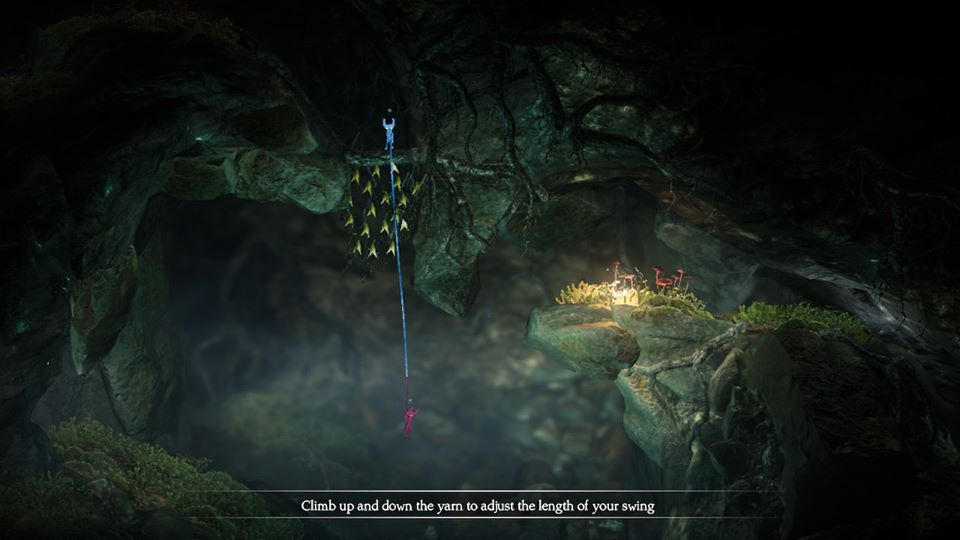
Swinging to the next ledge. You can use the yarn as a type of lasso to latch on to nodes to then swing and launch yourself forward. Both players can do this separately or together to create a longer string of yarn to reach further places. You can also adjust the slack or length on your own. Each player can also form knots on nodes from one end to another to create a spring to bounce off. The string can also be used as a bridge to ferry objects to another area.
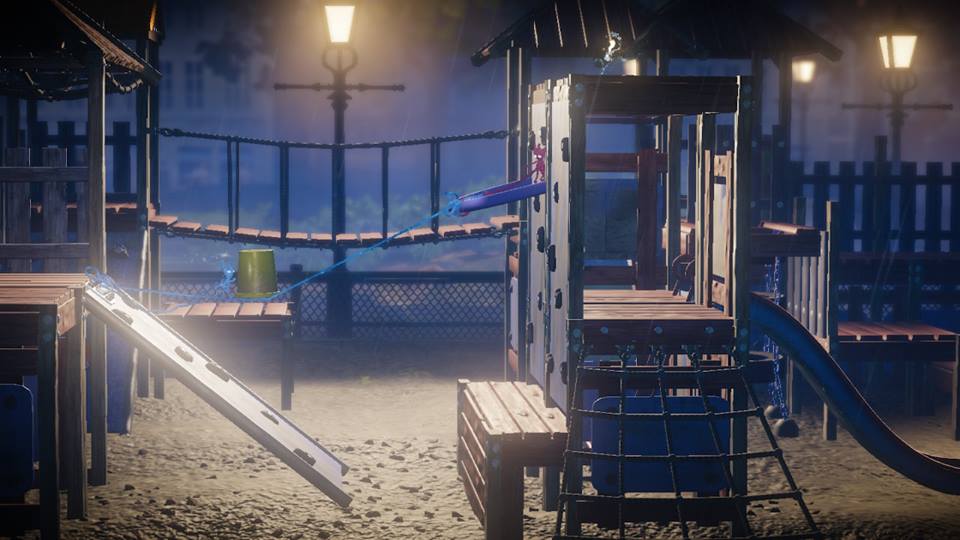
Moving a bucket from point A to point B. Working together is the best!
There’s plenty of yarn that can be used between the two players but sometimes the restriction of your reach is built into the puzzle. One character may have too many knots tied at one time so it’s up to the other to complete other tasks in a certain order.
As a form of aid, you may need to loop your yarn around a certain object so that the other player can pull themselves back up after being left behind. This is especially true if both characters need to be in two different places at once to connect things together. For example, if someone needs to press a button while the other walks under a lifted object. In one of the levels there was a chicken chasing the Yarnys and therefore one character had to distract it while the other escaped. The camaraderie needed in this game is absolutely heartwarming. You constantly need to lend each other a hand to prevail.
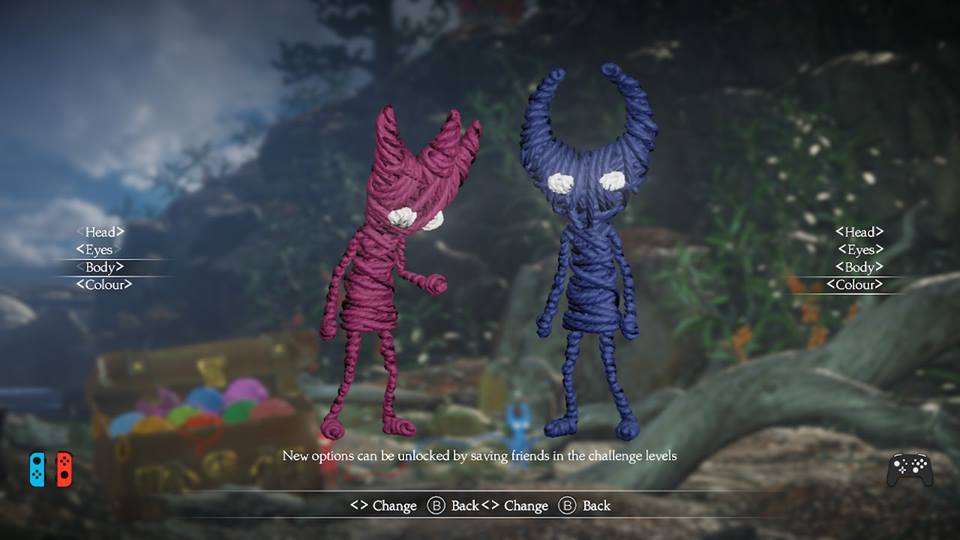
It’s possible to change you color and appearance. It’s easy but not too easy!
If you are like me and have a hard time using the swinging mechanics in this game but excel at perfectly timed jumps, fear not, you can hitch a ride on your partner until that particular challenge is over! In this game you can become intertwined with your partner and take a back seat to playing if you’re having a hard time with a certain obstacle. This way no one is waiting too long after the other player and there’s no need to become frustrated with each other.
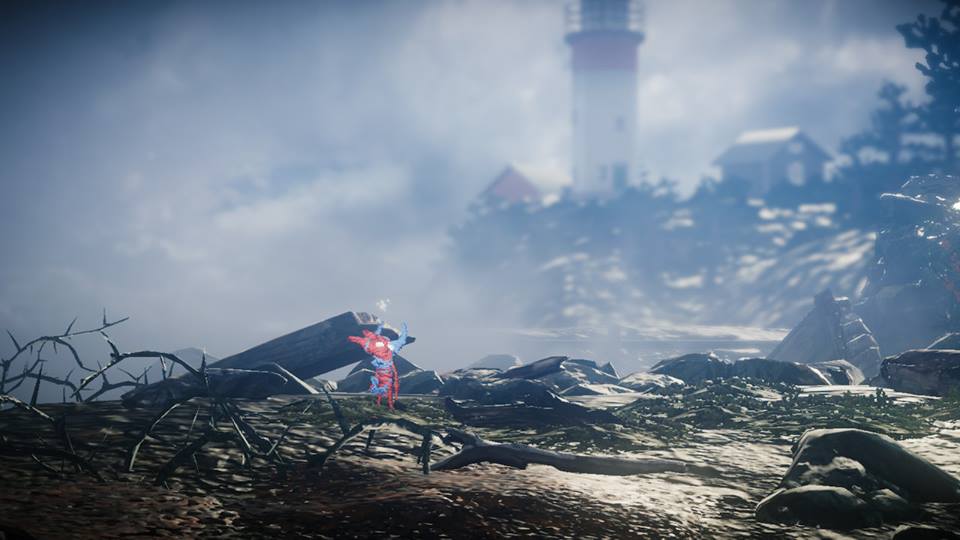
Combining together to form one Yarny. Speaking of frustration, if you’re having a particularly hard time with a puzzle there are always hints that are available! However, I found myself rather enjoying the puzzles that this game had to offer and never spent too much time on any of them. There are no lives, no health bar, and if you die you only have to restart to the last checkpoint. There are an abundance of checkpoints which are situated pretty much after every puzzle. A guiding light will act as a checkpoint and also always show you where to go next.
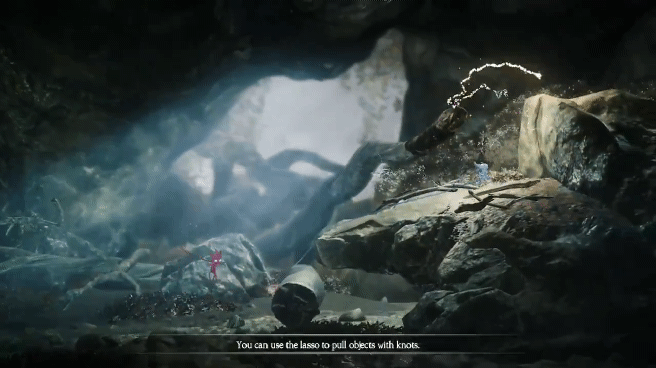
Impatient partner is impatient but it’s hilarious! This gives the game just the right amount of a challenge without being too difficult. The only times you will die is if an animal reaches you or if you fall into a dangerous pit of fire, or drown in deep water. There are also enemies that look like wisps of dark clouds. They supposedly represent dark or negative thoughts or feelings and you cannot let them touch you.
Graphics and Controls
The background graphics can be a little jarring at first as they lean more toward the realistic while your characters look a lot more like cartoon-style. However, as you continue to play you truly get to experience an amazing environment from caverns to rapids and to lush green forests. There are a lot of objects and things in the environment to interact with. Some vines can be climbed, forklifts can be used to access new heights, buckets can be turned over to create an extra step, and bricks can lend some weight to a plank as a catapult.

Gorgeous sunset overlooking the water. The developers really did a wonderful job with the physics and the mechanics in Unravel Two. Every single action taken is so seamless and precise. It reminds me of what Little Big Planet tried to be, at least the second iteration that I played, but ultimately failed at. The movement of objects and their gravitational pull were spot on. It made them and yourself very easy to maneuver. I would recommend that the game be played with either two pro-controllers or one pro-controller and both joy-cons together as it would be easier to pull off certain moves.

Gaining momentum with a skateboard to reach the top. This game may seem rather short but it is definitely worth the money. In fact take all of my money because I want more levels or a third game with cooperatively play which is something I hope they continue to do. The game will probably take you approximately 7-8 hours to complete but there are separate challenges that open up after every level if you want to attempt even tougher puzzles and obstacles. You can purchase Unravel Two on the Nintendo eShop here.
Mar 20, 2019Reviews
Two Point Hospital is a quirky hospital sim builder developed by Two Point Studios and published by SEGA. For those of you who recall playing EA’s Theme Hospital back in the late 90’s, Two Point Hospital will have you feeling nostalgia as the two games are very similar with Two Point Hospital feeling just like an updated version.
Story & Content:
Two Point Hospital lacks a story line but that doesn’t mean it lacks personality. Every patient that comes into your hospital will have a quirky disease that needs to be taken care of by an even wackier medical contraption.
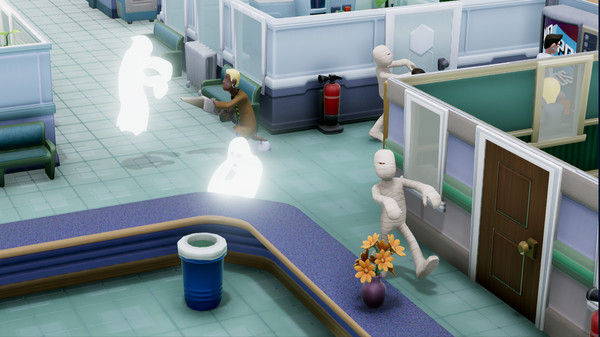
Sound & Music:
While you are treating your patients, there are occasional announcements over the intercom and a radio station with a funny DJ. These little touches along with a very fitting cartoon art style, work well together to bring out the personality of Two Point Hospital and help you not miss a story line.
Gameplay:
The gameplay is quite simple and in-line with the usual sim builder games. Within 15 levels you build various rooms, hire staff to run them and once you have everything you need, the game will run itself while you watch. There are a few other options like making your hospital look visually appealing, making sure your patients don’t get bored, putting sanitation centers to insure the cleanliness of the hospital, and training your staff, but these aspects are also very limited. The simplicity of this game-play led for a very relaxing afternoon but I felt like the game needed more context to keep me playing it.
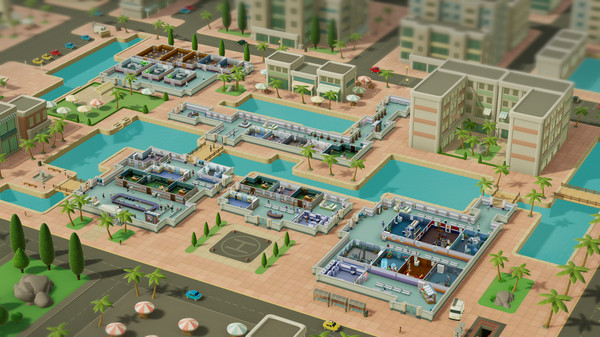
Final Thoughts:
The game runs for $34.99 on Steam and with the amount of content it has now, this price seems to be quite steep and (to those not accustomed to Tycoon games) might not be worth it. However, when this game can be found on sale, purchasing it would be recommended if you are looking for a funny and relaxing sim builder.
Mar 20, 2019Reviews
Style Savvy: Styling Star is a fashion simulation game for the 3DS published by Nintendo and developed by Syn Sophia. It was released in North America on December 25th, 2017 on the Nintendo eShop only. It’s the third iteration of the series with the previous titles being Style Savvy: Trendsetters and Style Savvy: Fashion Forward. I can’t figure out why this hidden gem is so poorly advertised when compared to other games of this genre. This particular one stands out for its heart and messaging; be yourself and anything is possible.
About Styling Star
At the very beginning you get to customize your female avatar. You are then told by your uncle Tim that you are now in charge of your own clothing boutique. Customers begin to walk in and ask for items and it’s up to you to choose what they specified (i.e. purple earrings). You can search your inventory via item request or do your own in-depth search via patterns, colors, styles, etc.
Each customer has an information card that you can view. It has their name, personality, a friendship rating, their hobby and their job. It even shows items they may have previously purchased from you. This way you can keep tabs on their history with you and remember who they are. As the game progresses and you start to make a name for yourself, the customers start trusting. They let you decide on their entire outfit as long as it’s within their budget and preferred style.
At first I just wanted to find a game where I can match some outfits. I fully expected it to be as frivolous and shallow as that sounded but quickly began to change my mind. The game tells you that wearing an outfit that truly expresses oneself and makes you feel beautiful can give you confidence. I was a valued member of the town and was truly making a difference in these fictional women’s lives.

Customer request/sale Story and Content
The main story of the game centers around three main characters Rosie, Alina and Yolanda. They come to you for help in creating their persona as you help them along their singing careers. You get to be a part of their rise to stardom and see them perform songs on stage. The song selection varies on the style of clothes and accessories you gave them. All their performances can be reviewed by going to your menu and choosing MewTube (I see what you did there). You get once again proudly watch them sing and dance in the outfit you have chosen for them.
You get to truly build a rapport with these girls as they frequent your shop. They tell you about big or small moments as they keep you updated on what’s going on in their lives. There are also several other events with minor characters. As you dress them for success, they start building their own shops such as a beautician’s, hair salon, flower shop, bakery, and concert hall. It’s almost impossible to fail at this game. If a customer is not be happy with your choice, they will return at a later time to try again.
The main point of this game is to make people feel comfortable in their own skin. Nothing is more satisfying than seeing your customers coming back into your shop wearing the last outfit you sold them. It’s exciting when they tell you that it helped them nail an interview, feel good about their date or make a new friend. This is a step up from Fashion Forward as that game did not have so much as an overall story but just an objective of putting on the best fashion runaway show.

Yolanda’s first live concert Gameplay
This game can basically go on forever. The sheer volume of items accessible can offer millions of different combinations of outfits. This includes hats, bags/purses, dresses, glasses, earrings, necklaces, shoes, gloves, scarves, etc. The different styles are Lively, Eastern, Basic, Girly, Psychedelic, Boho-chic, Gothic, Baby Doll, Bold, Rock, Chic, Feminine and Preppy. Once you start earning some money, you can make a trip to the Exhibition Hall. There you can shop at the brand stores you have unlocked. You can add what they have in stock that day to your checkout basket and later find it in your store’s inventory.
Once you have purchased an item, you can always easily reorder it from your menu and will always have it in your personal inventory for your avatar. When you’ve done that, you can head over to the beautician’s to do their make-up which includes eye-shadow, lipstick, eyebrows, eye color and nails. Then you can also head to the hair salon to recommend a color (with or without highlights), length and style. However, I found both of those things to be more of a chore as you had to go somewhere else to do it. It randomized which customers would go to the other shops so you can’t really choose who you want to give a makeover to.
This game features a decorating aspect as well. You can change the floor, walls and furniture of your apartment or boutique. For your boutique, you can change the music playing in the background, dress up your mannequin in your display window, dress up your shopkeeper, and customize your storefront’s layout, color and style both indoors and outdoors.
Comparing Games
I’m about 50 hours into the game and have yet to complete the story-line. It’s very slow-moving because you have to wait for the main 3 characters to show up randomly in your store with no other means of progression. Thankfully in this sequel, you don’t have to wait as long as the in game clock is not in real-time. This works really well for Animal Crossing as every day is fresh with new items and holidays are special. In Fashion Forward, if you ran out of clothing that matches, you had to wait an actual entire day for the shops to cycle through their inventory. It reminded me of a mobile game that you can only play a little every day rather than sink in quite a few hours into a game whenever possible (which is how I prefer to play).
The content in this game has been cut quite a bit compared to its predecessor. Fashion Forward used to have “treasure hunts” for make-up sets and a clothes designing option. It also had Caprice Chalet which was a feature where you can design several rooms in a building and rent them out to customers. Your customers also used to invite you out to places to take photos together and there was a modeling studio where you were paid to do a photo-shoot. That feature was honestly my favorite part of the whole game and saddened me that it wasn’t included.

Window display of my boutique that I called Jojo’s Graphics, Sound and Music
The graphics of the game are great for the 3DS with every scene and character interaction being in 3D. Where the game truly shines however, is its music, if you’re a fan of pop. The different styles of music go along well with their clothing style counterparts and the soundtrack during certain moments is adorable.
I really love the main theme song Fight For Your Style by Anna of Japanese girl group FAKY whom sings for both the English and Japanese versions. This song perfectly encapsulates the whole feel and point of the game with lyrics like “Getting judged by everyone can make you feel like you’re worthless. It’s so hard to be yourself. But it’s your way; gotta fight no matter how hard it can get (Why are you giving up?). Your style, hold your own. Don’t ever let yourself forget!” and the upbeat tempo has me singing along to this song every time I hear it and it stays stuck in my head for days afterward.
If you’re a fan of fashion, music or you just like to get creative, I highly recommend this title for the Nintendo 3DS, which you can purchase here. I’m hoping that it will get a Nintendo Switch port so that more people can be aware of its existence and we get another bigger and better sequel. For more fashion games by us click on this link.
Dec 15, 2018Reviews
About the game:
Hunter’s Legacy: Purrfect Edition is yet another feline-themed Switch title. The game, which is described by its developer (Lienzo) as a Metroidvania adventure, is set in an exciting fantasy world filled with fierce foes. The game was released on the Switch eShop on 13th December for just $6.99.
Play and control Ikki, a heroic huntress cat with twin swords (are claws not enough?!), a bow, and magical abilities, in an attempt to save the Kingdom of Iripur from the evil Morodir in this action-filled 2D Platformer.
The original Hunter’s Legacy game was released on xBox, PlayStation, and Steam, where it received mixed reviews. Common complaints with the original included:
- A lack of ore (which is required for upgrades)
- An uneven distribution of ore
- The villain and Fang of Alliance aren’t explained
- Ikki seems unfairly disadvantaged due to her inadequate weaponry, which kinda ruins the gameplay experence for some (or in the words of a reviewer on Steam) ‘I know kitties with bows and swords can be cute but this one needs a machine gun badly.’
- Inconsistent difficulty spikes
Hunter’s Legacy: Purrfect Edition is a definitive, improved version of the original game, exclusive to Nintndo Switch.
Hunter’s Legacy: Purrfect Edition features:
- New story sequences
- Additional character dialogues
- New animations
- Updated level design
- A brand new mini-map feature
- Improved melee combat
- A new game plus mode
Despite these added and improved features, the game levels still lack variety and there are still inconsistent difficulty spikes.
My Purr-sonal Opinion
Story:
Ikki, who is also known as the Heroic Huntress of Un’Amak, embarks on a quest in aid of the Iripur, a race of anthropomorphised cat people who have had their Fang of Alliance stolen by the evil Morodir. In order to restore peace, Ikki must locate three sacred orbs to unlock Morodir’s barrier and then retrieve the Fang of Alliance. As you encounter glowing rocks throughout the game, you will be given insight into the game’s backstory
The introduction to the game is kept very brief, with just a few cutscenes (which are shown below) that don’t provide a lot of context. Additionally, I found the narrative to be quite cliche.
Gameplay:
The controls of the game are pretty simple. The arrow keys on your right joy-con will trigger Ikki’s moves, which include bow and arrow, sword, dodge-roll, plus more as you progress through the game, which is approximately 5 hours in length. As moves are triggered by the press of a single button, and that most of those buttons were attack moves, I appreciated that I didn’t have to fumble to fight foes.
The inventory in the game is great, as it’s de-cluttered and allows you to look at the entire world map. This map shows your current location, your destination, possible fast travel locations and where any chests in Ikki’s vicinity are located.
There are some tricky boss fights and challenging situations to face, which is something that a few critics say can be a rage-quitting factor. However, I really enjoyed it and very much felt like it was the sort of game where you could come home at the end of the day and play a game that doesn’t require too much thought. Additionally, players get a sense of fulfilment from unlocking new abilities, surely making the frustration worth it. Ultimately, it’s important to remember that despite certain parts being difficult, the game is not impossible to complete, and that save points are pretty frequent.
Graphics and Sound:
I really enjoyed the cute Metroidvania art style used in the game. Although subtle, there are design changes such as new animations for some characters. Additionally the game’s levels have been designed to be more fluid.
Owing to my weird sense of humour, I also liked Ikki’s variety of facial expressions, of which I may have made memes out of (sorry not sorry)
Ikki Memes:
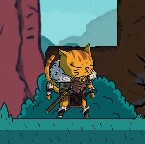
How dare you feed me dry cat food. 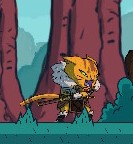
When mom confiscates the sibling’s Switch 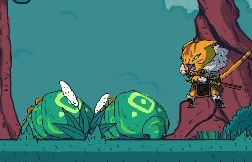
When you try out WWE moves on your siblings 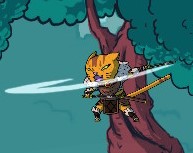
When the person in front at Starbucks grabs the last donut 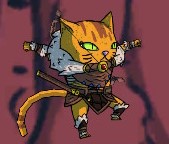
I am literally so zen right now 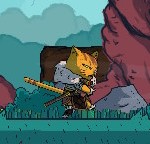
When mom confiscates your Switch 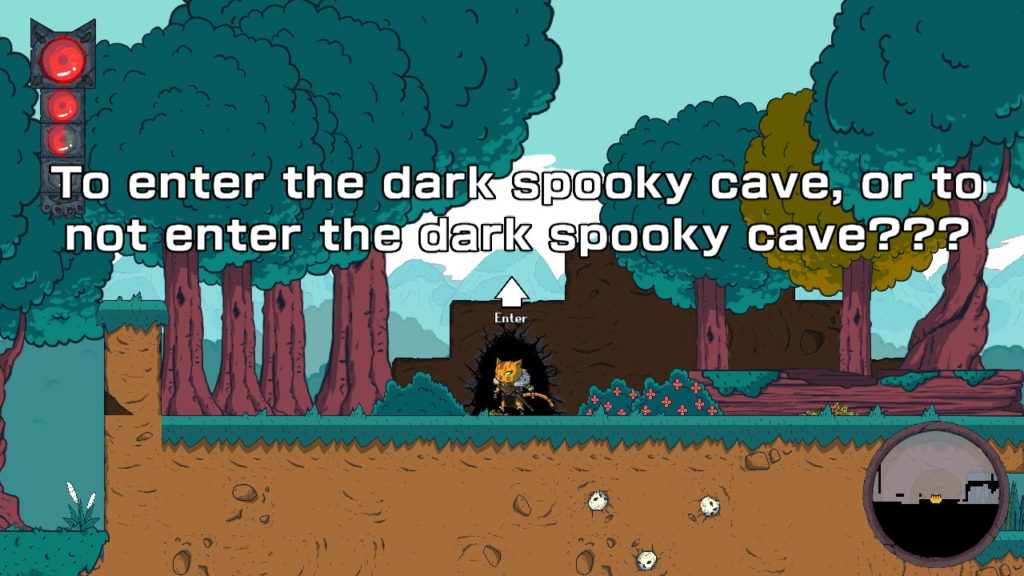
I found that the Switch version of the game ran very smoothly, and was a definite improvement to the PC version, which has been criticised for its framerate.
Additionally, in my opinion, there were no obvious visual differences between playing in handheld mode and playing in console mode.
I found the game’s soundtrack rather soothing and well-matched to the game’s environment. Initially, I really enjoyed Ikki’s cat noises (during combat, when attacked etc). However, as painful as it is for me say due to being a cat lover, these noises become darn annoying after a while. This is a sentiment shared by many who have played the original game.
Confession: I do still find the hissing amusing though.
To conclude, Hunter’s Legacy: Purrfect Edition is an affordable cat-themed Metroidvania game will alluring graphics and music. I’d definitely reccommend it to feline fans and those who like platformer games. However, whilst I do feel that the game is pretty and worth its retail price, it is let down by its limited context and narrative, and can be unfairly difficult at times. I feel inclined to agree with reviewers who have said that it doesn’t really offer anything new to the already quite saturated adventure-platformer gaming industry. However, it’s a pretty aesthetic game, and how can you not like a game with cats?
Jun 8, 2018News
In a gaming climate full of lengthy and mechanically heavy experiences, there is always a place for a stress-free shorter experience. Shape of the World is a prime example of a title that trades out gameplay depth for a short, concise and relaxing gameplay adventure. Developed by Hollow Tree Games, Shape of the World is a first-person walking simulator adventure in which you explore a psychedelic and unknown world that comes to life around you. As you traverse through the world, the flora and landscapes materialise before you. It truly is a world of your own creation. It’s easy to compare Shape of the World to artistic gaming gems such as Journey, and despite not quite being as masterful, Shape of the World manages to provide a beautifully engrossing world that had me so heavily captured in its 1-3 hour runtime, that it freed me from the stresses and anxiety of reality.
If you were expecting a hearty narrative or any inkling of story in Shape of the World, sadly you’ll be disappointed. The lack of an established story leaves the interpretation of events for the player to mould, much like the games world. You awake in a world in a empty world devoid of colour, and from there the world is yours to shape. Storywise, there’s nothing given in Shape of the World, a reality that despite being upsetting, led to me making my own assumptions of what it all meant. Is it all a dream in which you form a world around you? Or are you possibly a god crafting your own shape of the world? It is interesting to theorise after all, and while I don’t particularly think it was a horrible choice to have no story, I do wish for more clarification was being made on what exactly is going on.

No story in sight, yet the world is still a beauty to explore
In terms of gameplay, your goal in Shape of the World is decidedly simple. You walk around in the world’s multitude of environments, bringing them to life, while locating triangles that once passed through, alters the environment as well as the colour of the world. As you walk through all the locales on your journey, such as mountains, swamps and caves full of water, you’ll find yourself in awe of the environments you are creating all around you. Tree’s spiral up from the ground in a multitude of different designs, tufts of grass emerge on the ground mere metres from where you’re about to stand, and a variety of alien creatures inhabit the land around you. The creatures on display range from weird floating blobs and jellyfish-like creatures, to animals such as fish and a hermit crabs. There’s even a giant pink whale that swims in the sky, if this game wasn’t odd enough already.
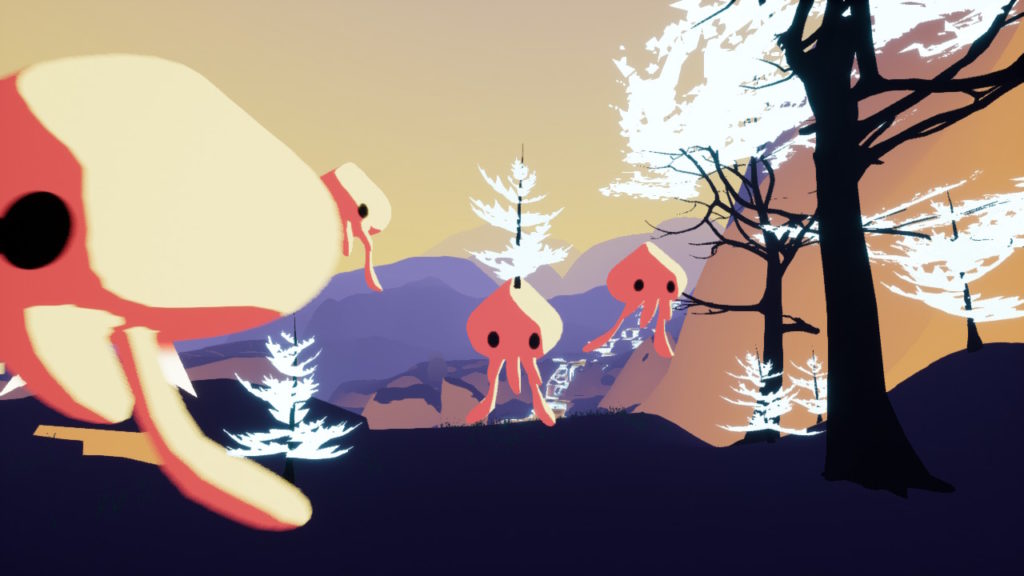
There are plenty of cute creatures to encounter on your travels
In the time between getting from each triangle checkpoint to the next, you’ll find yourself interacting with the flora and fauna of the world. Interacting with trees for example causes them to disappear, while also giving you a momentary momentum boost, allowing you to effortlessly glide throughout the ecosystem you’ve singlehandedly built. Interacting with the abundance of creatures lead to a variety of different results. Some creatures maintain regular activity, while the aforementioned jellyfish looking creatures shoot into the sky like rockets when they are touched.You can also find seeds scattered amongst the land, which when collected further change the colour scheme of the world, but also allow you to plant your own trees and other objects wherever you like. You don’t have to interact with everything in the world, but the curiosities always got the better of me.

So many lovely trees
There are puzzles in each area of the world, which involve actions such as interacting with a bunch of pillars to create a floating staircase, or touching a group of stalactites to raise the water levels in a cave. All of the puzzles essentially boil down to interacting with a bunch of glowing objects in the environment, and while I wish there was a bit more variety in puzzle design, the overwhelming urge to progress throughout the world in search for answers meant that I didn’t really mind the lack of creativity in the puzzles. The gameplay in Shape of the World is unashamedly minimalistic, and yet despite the lack of things to do other than simply interacting and exploring the environment around you, I still found myself deriving plenty of enjoyment from the gameplay on offer. At the end of the day, Shape of the World is meant to be an explorative adventure rather than a gameplay deep experience, and it should be treated as such.
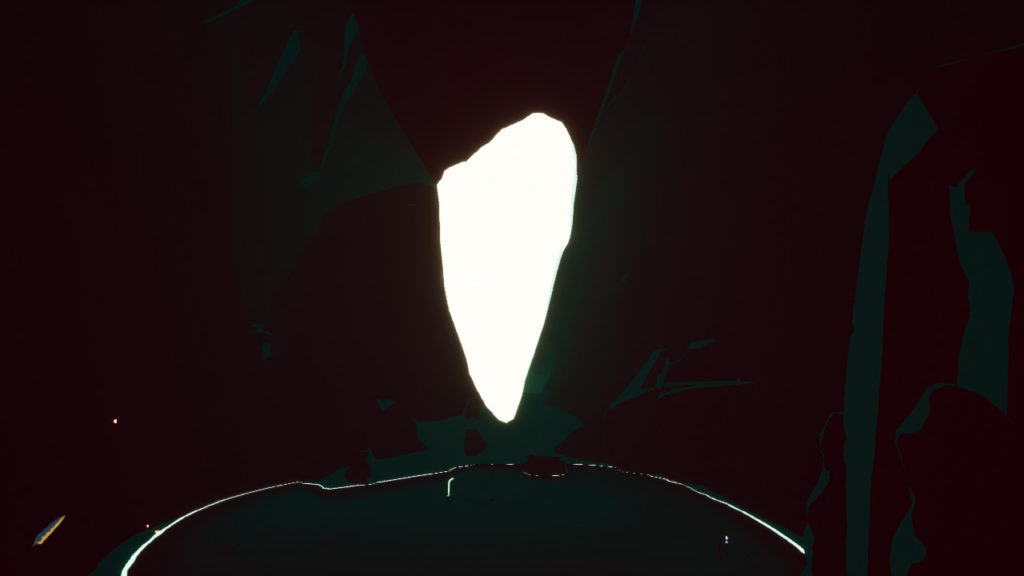
Puzzles involve interacting with glowing objects in the world
Also aiding in making the journey of Shape of the World so engaging is the constantly changing colour palettes that keep the world forever feeling fresh. The game looks jaw-droppingly gorgeous at all times, and although the artstyle can be a little disorienting initially, it’s one of the most attractive strings in Shape of the World’s bow. I found myself constantly taking in the view, as well as taking copious amounts of screenshots. The sound design is top notch also, with the game having a great soundtrack that expertly strengthens the dream-like atmosphere of the world.
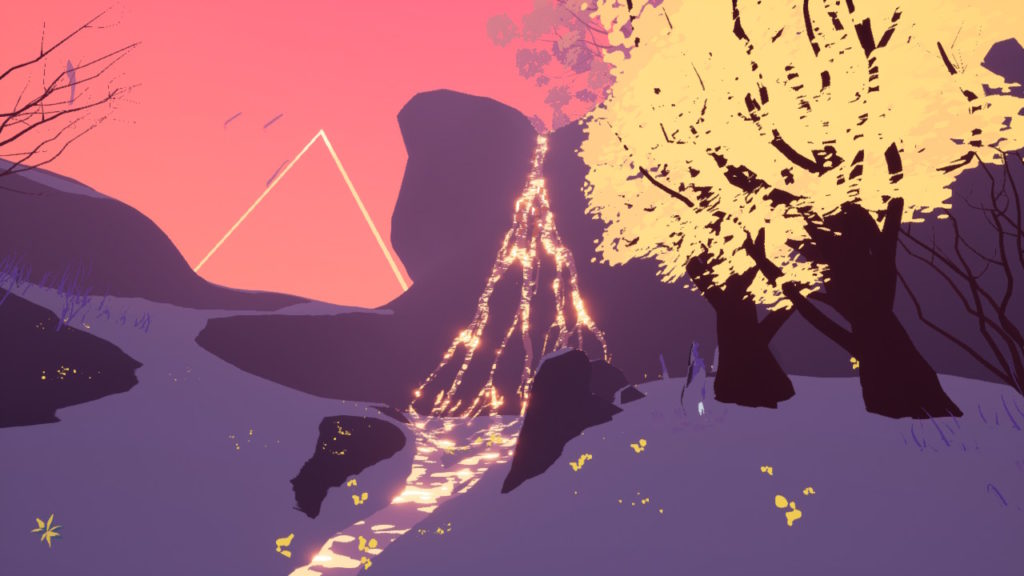
Even with the objective nearby, I always found myself taking in the view
Despite there being plenty of positives, I did run into a few issues with Shape of the World. I’m not sure if this issue appears in the PlayStation 4, Xbox One and PC versions, but on the Nintendo Switch version of the game I encountered numerous performance issues. The game was susceptible to heavy frame drops in small bursts, especially during the staircase sequences where your fast movement leads to the environment generating around you at a faster pace than usual. Sometimes there would be no loss of frames, while in other instances it would drop so heavily that the immersive spell that the game had me under was broken, which was disappointing. Another issue can be seen in the length of the game, as it only occupies around 1-3 hours of time. Yes, you can go back in a second playthrough and locate the seed collectables you may have missed in your initial run, but other than that, the game offers very little in regards to replayability.

The game is gorgeous, but occasional frame drops hurt the experience slightly
Overall, Shape of the World is a game that is sure to divide opinion. While many will be able to appreciate the artistry on display throughout the journey, I can envision others being miffed over the fact that the game overall lacks substance, with little to no gameplay other than meandering towards each goal, and no story present at all. If you’re a fan of the walking simulator genre of games or are after a short but sweet gaming experience, Shape of the World is a title for you. The world is beautiful, ever-changing and immersive, with the immersion further solidified in thanks to a miraculous soundtrack. The gameplay despite its simplicity does what it needs to in order for you to see the beauty of world you build, and even when you make your way towards the games conclusion, the ever-growing nature of the world meant that exploration always felt new and never stale. Shape of the World offers a psychedelic dream world brimming with otherworldly wonders, offering an explorative journey that I implore you to take.
Shape of the World was review on Nintendo Switch. Thank
Jun 6, 2018News
Moonlighter is a uniquely crafted game that expertly merges the rogue-lite action role playing of a game like The Binding of Isaac, with the simulation role playing of Stardew Valley. Comparisons aside, Moonlighter is very much its own beast, providing one of the most addicting gameplay loops in recent memory, alongside a bevy of mechanics and ideas that feel fresh and new.
By definition, a moonlighter is somebody who works an additional job after regular, full time employment at night. This is exactly the scenario that befalls Moonlighter’s protagonist Will. Will is a young merchant for the shop called Moonlighter in the village of Rynoka, a once thriving town that was built by those intrigued by the mysterious otherworldly dungeons nearby. The Dungeons as they are called in game, are portals to constantly changing locations, full of treasures and deadly creatures. As the village grew more and more greedy to snatch up all the sweet loot that these dungeons provided, they were closed, as too many lives were being lost. With the dungeons closed, the village struggled, turning many people away. Being the desperate merchant but also the gutsy adventurer, Will explores the depths of the dungeons, to gather loot to sell at his store to help bring the people back to Rynoka, while also living out his childhood dream of traversing through the mystical dungeons. In terms of story, this is all that Moonlighter really provides. Each dungeon has notes littered throughout that further explain the otherworldly nature of the dungeons, but besides that, the story of Moonlighter is yours to make.
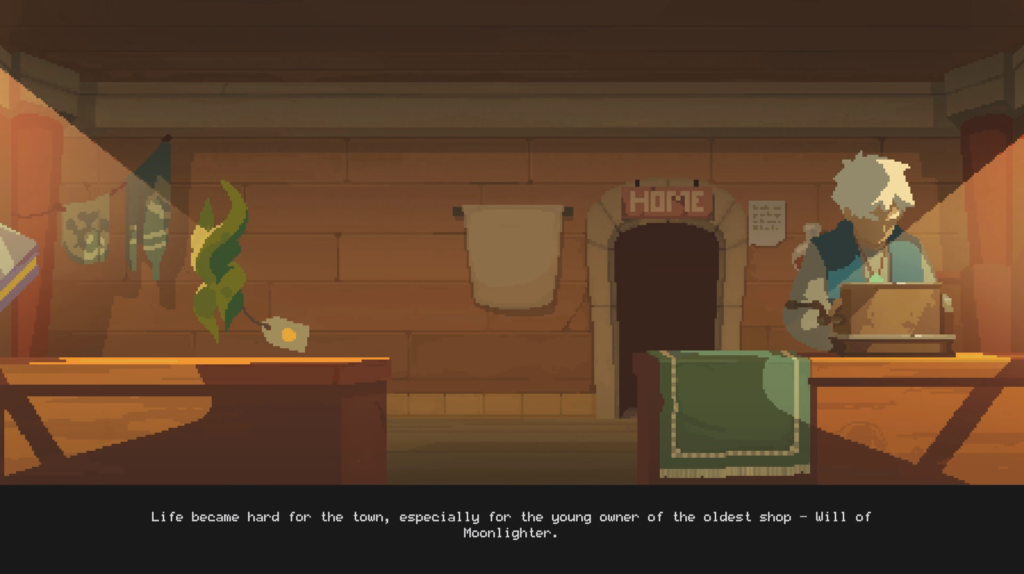
Introducing Will, the merchant of the Moonlighter
The gameplay of Moonlighter is split into two main parts, those being dungeon crawling and shopkeeping. Your daylight hours will be spent mainly running the Moonlighter, which involves selling the loot you have acquired from escapades in the worlds numerous dungeons. You can forgo your day work at the Moonlighter to explore the dungeons if you wish to do so, but dungeons aren’t as difficult throughout the day, leading to poorer quality of loot drops. For this reason I spent my days at the Moonlighter, and my nights in the dungeons.

Merchant by day, Loot Gatherer by night
Dungeons in Moonlighter are procedurally generated maps consisting of multiple rooms with varying enemies and types of loot to find, with the goal being to either make it to the end of the dungeon to kill the boss, or collect as much loot as possible before cleverly escaping the dungeon. As you make your way down the three floors of each dungeon on your way to the dungeon boss, you’ll spend your time engaged in combat with enemies, hacking and slashing away until the room is clear, before moving onwards to the next. For anyone that’s played 2D Zelda titles or The Binding of Isaac, you’ll know what to expect from the gameplay. You are initially awarded with a sword and shield, but you can also expect to craft and use other weaponry, such as big swords, bows, spears and gloves, all of which have their own pros and cons. Big swords for example are slow to attack with but pack a punch, while the spear allows for a greater attacking distance, at the expense of overall damage output. Enemies aren’t particularly difficult to take down, but they damage you so heavily if you aren’t cautious that death can come quickly, which isn’t ideal, as all items in your backpack will be lost. Thankfully, alongside his weapons, Will has a dodge roll that allows him to quickly evade attacks, a technique that is sure to aid you in sticky situations. The game even on hard wasn’t particularly difficult which is a shame, but I still found myself perishing on many occasions, forcing me to leave my loot behind.
Speaking of loot, there is plenty to find in each dungeon. Whether it be collected from dead enemies or pilfered from chests, you are bound to fill your backpack quite quickly. Having only 20 spaces for items leaves you with decisions to make as to what to keep and what to drop. This dilemma is further complicated when you begin to encounter cursed items, which are often rarer items that have negative effects on your inventory. Some cursed items can only be placed on the left and right hand sides of the inventory, while others may break if you take too much damage. The limited inventory space paired with the effects of cursed items leads to an interesting puzzle-game like battle when it comes to what you keep and what you leave behind.
Items collected can be sold immediately in dungeon through the use of the mirror (at a significantly reduced price), or can be held onto before leaving the dungeon. The problem is, leaving the dungeon costs a fee, unless you defeat the boss. The fee to use the pendant to leave the dungeon isn’t overly expensive, but upon returning to the dungeon, you start from the beginning. As your progress further in the opening hours, you are given another teleportation item called the catalyst, that for a far heftier sum than the pendant, allows you to go back to the Moonlighter with all your loot, before returning to where you were in the dungeon. This may appear to be a lot to take in, and it kind of is, but the premise is simple enough that it doesn’t take too long to understand what you need to do every time you go to the dungeons. At the end of the day it’s up for you to decide whether you want to play it safe and spend the gold required to leave the dungeon once you have enough loot, or progress further into the unknowns of the dungeon to defeat the boss and/or find better loot. It’s a savagely addicting cycle, but the constant decision making during each run leads to dungeons never feeling overly stale.
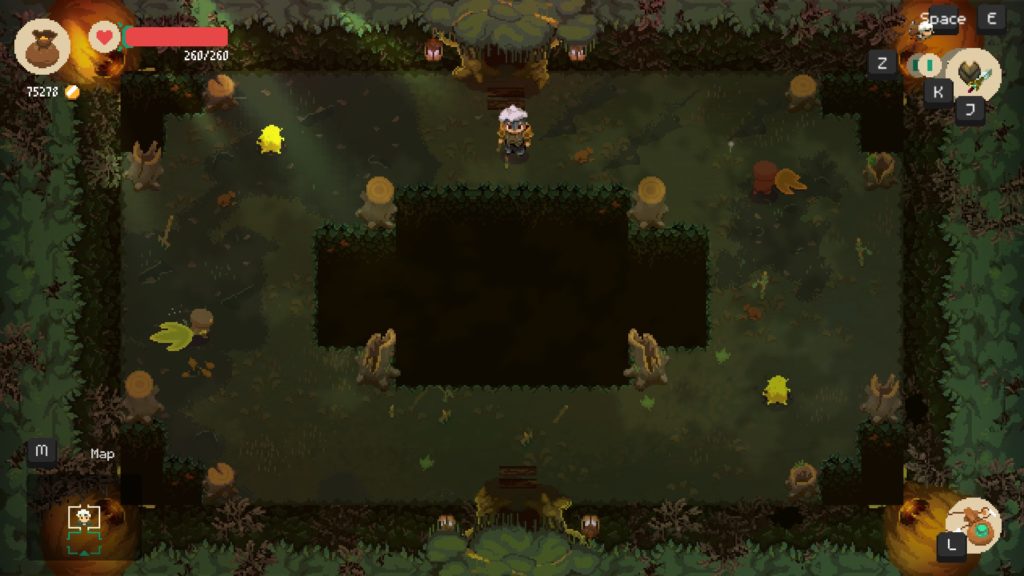
Dungeons are both pretty to look at and a joy to traverse
As mentioned previously, when you aren’t trying to defeat the bosses of dungeons and collecting and managing the copious amounts of loot you gather, you’ll spend your time selling your wares as the merchant of the Moonlighter. Selling items at the Moonlighter is a simple affair of placing your items on your sales tables, and pricing them at a price you deem appropriate for the item, however it’s a far more intricate system than that. The reaction of shoppers to the price tag of the item serves as a gauge as to whether an item is worth its sales price or not. If a customer is happy with the price, a simple happy face will appear above their head, and they will grab the item for you to complete the purchase, where as a disheveled sighing face will appear if the item is too expensive, causing them to look around for something else to buy or leave the store entirely.
If an item is priced too cheap, they’ll gleefully exhibit a coin-eyed emote, while if the item is slightly overpriced, they’ll display a reluctant emote, leading to the item being purchased, but the demand of the item decreasing overall. The key to selling items in the Moonlighter is to slap a price on something and see how the consumers react. The shopkeeping mechanics feel particularly interesting and enjoyable, and even after 20-30 hours of gameplay the process of pricing items to find a ideal price point feels refreshing and unique. Not going to lie though, seeing a customer glow with excitement after laying their eyes upon a great deal is heartbreaking, but it also puts you in good stead to better estimate your price the for the next time.
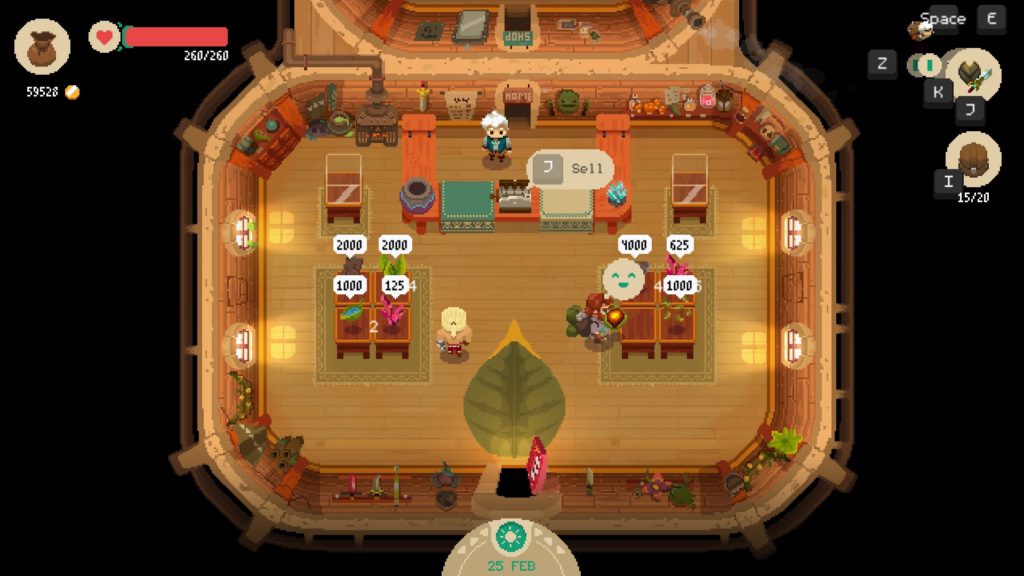
Another Happy Customer
In the small periods where you aren’t shopkeeping or looking for loot in dungeons, time can be spent breathing life back into the village of Rynoka. Upgrades for both the town and the Moonlighter can be purchased for gold at the town bulletin board. Upgrades for the town come in the form of staff, who once purchased, set up their own stores in Rynoka. Shops that can be purchased include an armory that allows you to buy armor and weapons in exchange for gold and materials, as well a potion shop that allows for health potions and stat upgrades for armor and weapons to be purchased. You can even buy another retailer similar to the Moonlighter that also sells loot found in the dungeons, meaning that if you’re too lazy to journey out to find a specific material required to craft a better sword, you can simply purchase it from the store. Be wary though, it’ll cost you a pretty penny. These upgrades are essential to building up your character, and they also aid in helping Rynoka appear like a living and breathing town.
You can also spend your hard earned merchant money on upgrades for the Moonlighter. There are small store upgrades such as purchasing a better chest to expand the stores inventory space, or buying a better cash register which leads to customer tips, but there are also more extreme upgrades, such as levelling up the entire store. Levelling up the Moonlighter costs a considerable amount of money as to be expected, but they are worthwhile investments if you want to be making money at a faster rate. Upgrading the store leads to the expected increase of inventory space and tables to place items, but it also leads to new mechanics being implemented altogether. The first expansion allows for the Moonlighter to be decorated with special items that buff the store, such as 10% longer open times, as well as the ability for the moonlighter to receive customer commissions. In regard to the commissions, customers make a request instore for a certain resource, offering you a hefty chunk of cash, so long as you meet their demands within a set amount of in-game days. Upgrades are essential to progression in Moonlighter, and thankfully they feel particularly rewarding.
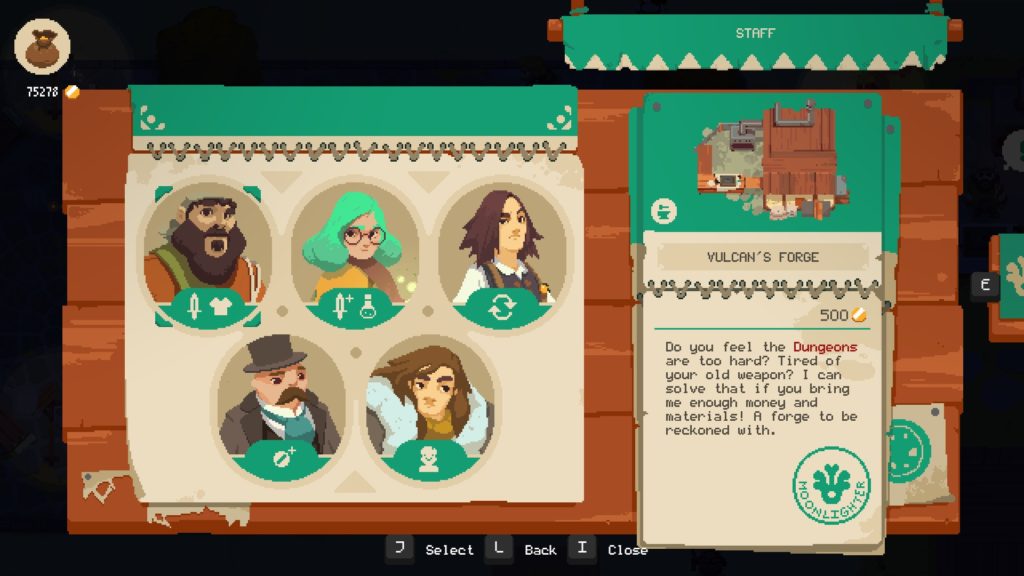
Upgrades for the town and the Moonlighter can be purchased at the bulletin board
I’m not sure if it was just a coincidence or not, but my first upgrade also introduced me to thieves, who attempt to pose as would-be customers, before deviously running off with whatever item they get their grubby mitts upon. This initially took me by surprise, as I saw a suspect looking individual run off with some crystals that were netting me a pretty decent sum of gold. Once thieves are in play, managing the store becomes a tad bit more stressful, especially considering the amount of money the items begin to sell for as you reach the later dungeons. Overall, the upgrades in Moonlighter feel extremely rewarding and exciting, as they don’t just net you inventory upgrades, but new gameplay mechanics also.
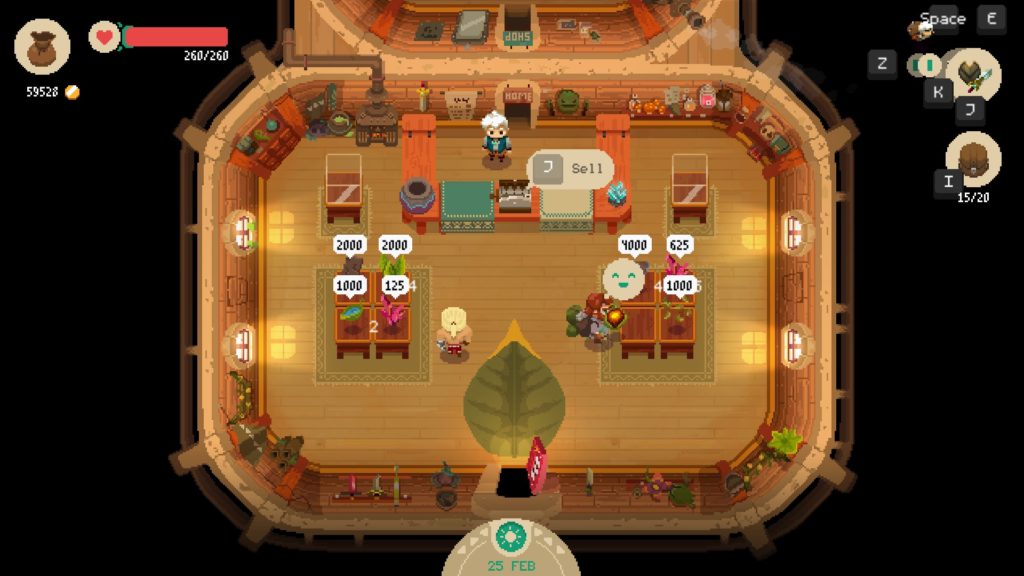
Thieves are always trying to nab your most lucrative products
Despite the sheer amount of positives that Moonlighter brings to the table, it does have a few minor issues. One of my biggest faults with the game is the hitboxes of the enemies present in the dungeons. As I progressed through the game, my main weapon setup was the sword and shield combo, however, despite clearly slicing away at an enemy, my hits didn’t seem to register. Most of the time this wasn’t an issue but on a few occasions I went in for the killing blow, only to be rejected and dealt a heavy blow of damage instead. I also wish there was more of a narrative present throughout Moonlighter. I was as enthralled as Will was to see what lay behind the 5th door of the dungeons, but I did find myself wishing there was more of a narrative reason for rebuilding the town of Rynoka and the Moonlighter, although I’m probably being a tad nitpicky.
At the end of the day though, Moonlighter is a truly brilliant title that I find myself extremely addicted to and enamored by. The constant trade off between delving deeper into dungeons or cutting your losses with the loot you have is a consistently intense and thrilling experience, and even when you get too greedy and die in the dungeons, the loss of all your loot only seems to inspire another journey. Despite the seemingly overwhelming depth in each of the games core mechanics, the game almost never feels overbearing and difficult to comprehend. The fact that Moonlighter can both feel mechanically deep and simplistic at the same is a testament to the games design. Pair the addictive gameplay loop of collecting and selling loot, with a brilliant pixel art style and an alluring soundtrack, and you’re left with one of the most satisfying games of recent memory. Moonlighter is available now on PlayStation 4, Xbox One and PC, with a Nintendo Switch version slated for release in the near future.
Huge thanks to 11 bit studios for a Steam code of Moonlighter.
May 16, 2018News
For those with their head in the ‘clouds’, who have not yet played or heard of Yonder: The Cloud Catcher Chronicles, it is an aesthetic open-world adventure game. It was initially released for PC and PS4 on July 18th 2017. It will be released for Switch on 17th May 2018. The game can be purchased as a physical copy, or alternatively can be downloaded from the Nintendo eShop for a reasonable $26.99.
To any UK gamers, the game currently has a 10% discount and can be obtained for a reasonable £20.69 if pre-ordered today. You can pre-order it here. For players outside the UK, you can get the game on Amazon here.
Upon its release for PC last year, Yonder was praised for its beautiful graphics and amalgamation of different elements from popular game series’. It has been compared to Zelda, Harvest Moon, and Animal Crossing, as well as many other games.
Straight away I was able to see Zelda’s influence upon the game, with the beginning being suspiciously reminiscent of both Wind Waker and Breath of the Wild. (My boyfriend’s exact words upon watching my gameplay were “Oh look it’s Breath of The Wild!”). ????
A̶f̶t̶e̶r̶ ̶s̶p̶e̶n̶d̶i̶n̶g̶ ̶a̶n̶ ̶h̶o̶u̶r̶ ̶o̶n̶ ̶c̶h̶a̶r̶a̶c̶t̶e̶r̶ ̶c̶u̶s̶t̶o̶m̶i̶s̶a̶t̶i̶o̶n̶ you begin the game on a ship set sail for Gemea, a mysterious island full of Sprites, animals and Murk (that darn Murk!). Unfortunately, due to a disastrous combination of stormy weather and incompetent crew members, you arrive at Gemea via shipwreck (you had one job guys!????). Armed with a handy compass to (literally) light the way, you set off to explore the first part of Gemea. The Grasslands.
Similar to the game RiME, death in Yonder is apparently impossible. Jumping into deep water or off of cliff edges results in your character either re-spawning or whipping out an umbrella to float to safety?! So in this sense, in combination with no time constraints, no combat, and free reign to explore Gemea (aside from a few essential quests for story progression), the game is very relaxing and family-friendly.
Likes and Dislikes
Things I liked about the game ????
- The satisfaction one gets when mining rocks and chopping down trees (Side note: I enjoy spending days aggressively smashing rocks and branches on my farm on Stardew Valley). The slight vibration of the joy-cons when doing manual labour in Yonder enhances this satisfaction (yes, I’m a weirdo).
- The cute creatures, luscious landscapes, captivating compositions, and quirky quests were four of the most appealing aspects of the game for me.
- Additionally, I liked that there wasn’t any time constraints and that the game-play was very self-directed. This means that players can forge their own path through the game, at their own pace.
- As a cat-lover ????, I was very happy to discover that the game had a cat quest! Whilst finding all of the (55) cats in the game requires dedication, the side quest is definitely a cute addition.
Things I disliked about the game ????
- Maybe I’m just incompetent, but I spent about an hour looking for my missing crew members. After giving up the search ????????♀️, I decided to instead clear up my farm and return to the village. It was only then that I realised that this mission could not be completed until later on. Therefore an uncertainty/ambiguity of how and when to complete some missions was an aspect I wasn’t keen on.
- Additionally, each area of the game is very vast. Whilst this does offer players more adventure and opportunity to explore, it is easy to become overwhelmed and lost at first.
(Side note: Is it just me who thinks the cats look kinda creepy? With their vacant eyes and ability to stand like a human..)
- The faintness of the collectable cats meows, as well as them being small in size, makes them difficult to find in my opinion. It took me a whole (in-game) day to locate and rescue one from some rocks in Radiant Sands. I was tempted to leave it there, but the cat’s meows sounded so sad and pitiful. Anyone would think you’d committed the heinous crime of feeding it 5 mins late!

Additionally, some cats can only be discovered during certain seasons. Therefore after collecting all 55, I reckon players should be rewarded with more than just a stinkin’ trophy. Maybe a cat (or six) of our own, because who needs 55 cats anyway..?! ????

- To be fair, it is pretty cute to be able to see 55 kitties playing in a giant ball of yarn after completing the quest. 100000% worth it. Maybe.
- A final dislike was having to clean up creature poop. Definitely one of the less enchanting elements in the game.. ????
Main Features
Music and Cinematics ????
The game’s music and cinematics play a big part in making the game appealing. Beautiful mini cut scenes (such as when a player discovers a new area) as well as enchanting music, creates a soothing gaming experience and contributes to the game’s ‘Breath of The Wild’ feel. Even the little things have been thought of by developers. For example, the presence of pauses between music in order to lessen the likelihood of the player getting bored of the Soundtrack.
Relaxing, not taxing ????
Despite the murk casting a shadow over their homeland, the people of Gemea (mostly) remain welcoming, humble and charismatic.
This guy being an exception… With combat absent, the gameplay is calm, relaxing, and gentle, and focuses more on the player’s journey, as opposed to fixating on the destination.
Snow White’s 26 Sprites? ????
Finding Sprites is essential in Yonder in order to clear areas of Murk. Sprites can be found in many different locations, and each have their own unique personalities. They can range from forgetful, to grumpy, which kind of reminded me of Snow White and the Seven Dwarfs.
Although it can definitely be said that Gemea’s flittering inhabitants are a little more sprite-ly (heh) and helpful than their Disney counterparts.
Controls ????
The controls in the game are pretty straightforward, although players are given tutorials nonetheless.
Having Joy-Cons with joysticks makes the game more enjoyable and accessible for me personally. (Confession: I’m terrible at using WASD in PC games and will set the arrow keys as direction controls wherever possible). It is easy to use the compass (a useful tool) in the game by simply pressing the up arrow button (△) on the blue (left) Joy-Con.
I played the majority of the game in handheld mode, although graphics can definitely be appreciated more when the game is played on a larger screen.
Graphics ????
The graphics are hands-down the best aspect of the game for me. From twinkling sunsets over water, to luscious green breezy meadows, the varying utopia-esque landscapes are best described as eye-candy.
The attractive art-style is not dissimilar to My Time At Portia (MTAP). Both Yonder and MTAP are beautiful open-world RPG simulation games. They both allow players to craft items, manage a farm, and engage with a plethora of charismatic characters. They have also both earned a respectable 9/10 rating on Steam.
Bartering ????
Unlike many other games, Yonder utilises a bartering system. As opposed to just obtaining some of a currency and buying things, you barter with tradespeople instead. This is actually pretty useful as currency in games can sometimes be hard to accumulate.
Crafting ????
Some things can’t be purchased through bartering and will have to be crafted instead. An example being the Toy Cat (*whistles nonchalantly*). There are 8 different crafting classes (Guilds) in the game. Your character starts out as a Wayfarer, but can join different Guilds and become a:
- – Chef
- – Carpenter
- – Constructor
- – Tinker
- – Brewer
- – Tailor
- – Master Craftsman
Each class offers their own unique crafting recipes (not dissimilar to Level 5’s game Fantasy Life).
Farming ????
The game offers both crop and animal farming. Players can befriend exotic creatures such as the Groffle (by bribing them with their favourite foods). The creature will then follow the player. If lead to a farm with an animal pen, it can then be adopted.
You can also hire many characters in the game as farmhands (again, by bribing them with food). Farmhands will undertake a variety of tasks, and essentially help to keep your farm clean, tidy and running smoothly. Thus, maintaining its rating whilst you are away.
Exploration ????
There are eight different regions to explore in Yonder.
The Grasslands ???? – Grassy plains located in the center of Gemea
Crestfall Coast ???? – A coastal, temperate, tropical region
Dapplewood Forest ???? – A forest region crossed with creeks
Hearthwind Vale ???? – A region full of plateaus, valleys and swamps
Numino Peak ???? – A snow-covered mountain region
Radiant Sands ???? – A desert region
Sunderwind Wilds ???? – A prairie region
The Shivering Plains ❄ – A cold, snow-covered region
The different regions have their own unique climates, landscapes, characters, quests, guilds, wildlife and more.
Conclusion
Overall, I found Yonder to be an enigmatic game with lots of different features to keep players entertained. The variety of (sometimes kooky) quests, plethora of beautiful landscapes to explore, and the ability to farm, craft, mine etc, makes boredom unlikely, even for those with the shortest of attention spans.????
Whilst the vast landscapes may be overwhelming at first, you will become well acquainted with them over time. Having a large open-world isn’t necessarily a bad thing as it helps to make the game a little more challenging, as your compass doesn’t guide your character everywhere.
Put simply, if you are a fan of My Time At Portia, Stardew Valley or Fantasy Life, I would definitely recommend purchasing this game for Switch.
Yonder: The Cloud Catcher Chronicles will release on Nintendo Switch eShop May 17th, a physical version is set to release on June 12th, you can-pre-order it here.
Big thanks to Prideful Sloth for providing the review copy of Yonder: The Cloud Catcher Chronicles on Nintendo Switch.
May 6, 2018News
If you’re a fan of 2D platformers, you’ve more than likely heard of the Shantae series. If you haven’t than you’ve been missing out. Shantae: Half-Genie Hero Ultimate Edition is an expertly crafted 2D platformer developed by WayForward, a studio that is renowned for their expertise in designing platforming titles. Much like the previous Shantae titles, Half-Genie Hero is a brilliant experience, one that manages to tell an enjoyable story with its loveable cast of characters, while also offering satisfyingly smooth gameplay.
The story begins as Shantae, the belly dancing daughter of the genies is awoken by a mysterious spirit that warns her of an impending attack on the human and genie worlds, before she is quickly awoken to realise it was merely just a dream. After this dream foreshadowing the possibility that not all is quite right in Sequin Land, Shantae is tasked by her uncle to help him build his latest invention called the Dynamo, a device to that will ward off pirates and keep Scuttle Town safe. The blueprints to the invention are stolen by Shantae’s rival Risky Boots, sending her on a journey to recover the blueprints and the parts required to build the device, while also stopping the dastardly schemes of Risky.
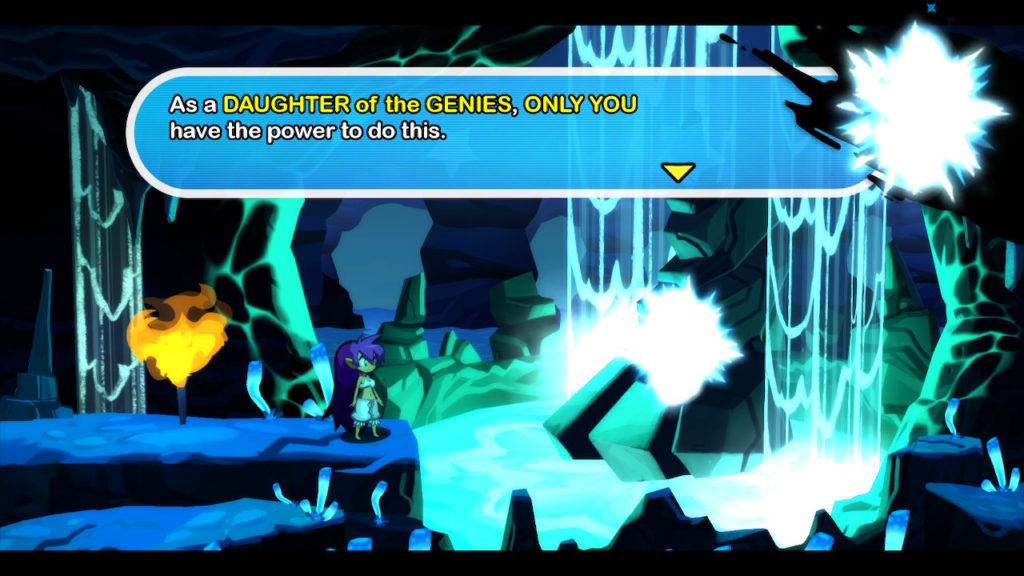
A mysterious spirit sends Shantae on a quest to save the world
The narrative merely serves to provide a reason for exploring the locales throughout the world, but despite that, I found the story rather engaging, in part due to the brilliantly written character dialogue, as well as the substories told in each level. For example, one level sees Shantae busting a corrupt Baron trying to sell human girls with fake tails as mermaids because he can’t keep up with the demand of the mermaid selling business. The writing is hilarious throughout the entire game, with characters making silly quips and jokes that actually had me laughing out loud. The cast of characters all feel well written, which in turn led to myself growing a fondness for them, Shantae and Rottytops especially. The story isn’t overly complicated, but the simplistic and entertaining narrative serves perfectly to compliment the game’s strongest asset, its gameplay.
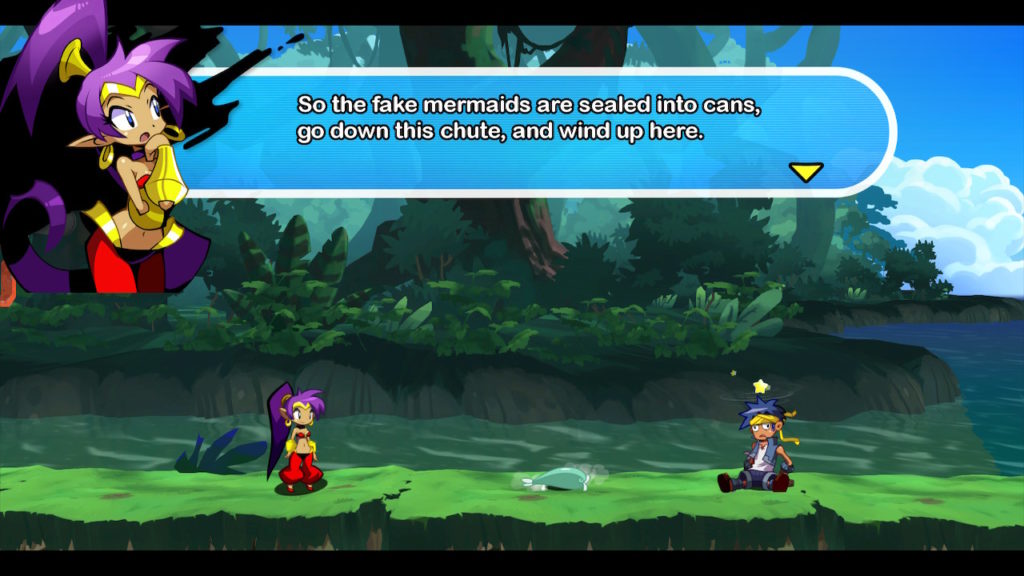
Adorably silly storylines feel right at home in Half-Genie Hero
In terms of gameplay, Shantae is undoubtedly one of the smoothest and satisfying 2D platformers I’ve ever played. At its core, Half-Genie Heroes gameplay is a classic 2D action platformer, with slight metroidvania elements. Each level has Shantae traversing a linear level, using her hair to attack enemies, and her belly dancing to transform in to animals required to progress through the level. There’s a monkey who can climb walls, an elephant that can break open new pathways that were previously not accessible, and many other creatures that you’ll unlock as you progress further in the approximately 7-8 hour campaign. Boss Battles also feature at the end of each level, and this is where the combat of Half-Genie Hero shines. Despite the simplicity of incessantly whacking your foe with Shantae’s hair, it feels extremely satisfying.
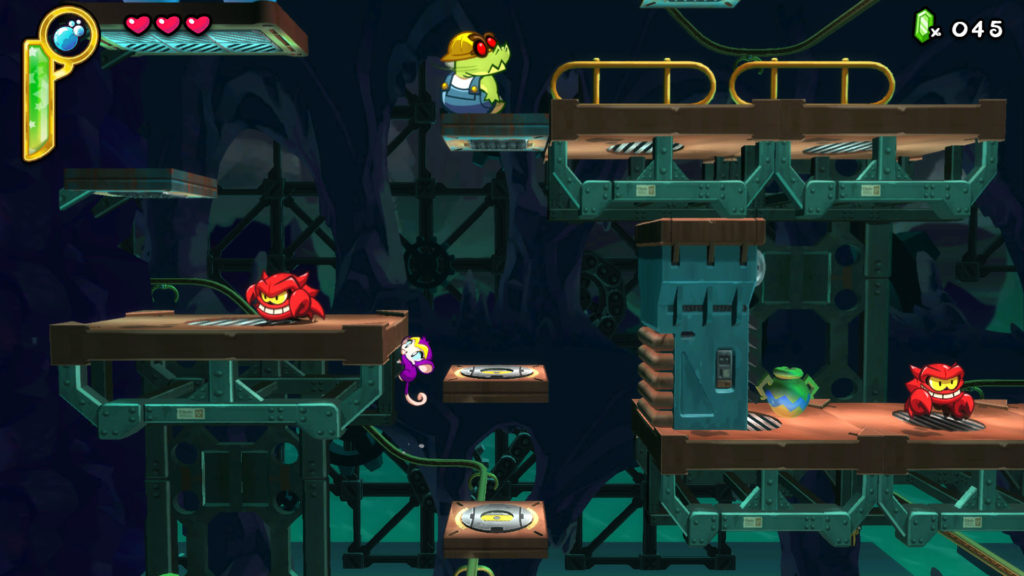
A Monkey is just one of Shantae’s numerous transformation options
You will find yourself using the aforementioned transformations regularly and they are plenty of fun to use, although most of the time they are simply used to backtrack to previous levels and collect items needed to progress the story. I wasn’t against the idea of backtracking in Half-Genie Hero, but the lack of a map within levels meant that some time was spent hopelessly looking around for the intended area I was meant to discover with my new found abilities, which was often a little frustrating. If you’re ever lost however, you can speak to the lady in the Bath House in Scuttle Town, as her hints despite not directly telling you where to go, can be particularly helpful. The item shop in Scuttle Town allows for you to cash in your gems for items such as Shampoo to upgrade Shantae’s hair, to items such as fireballs and scimitars, that serve as a secondary weapon option to Shantae’s hair. At the end of the day, Shantae’s gameplay is well refined and pleasure to experience, and despite feeling that the main game is a little too easy and not quite long enough, I had a great time from start to finish.
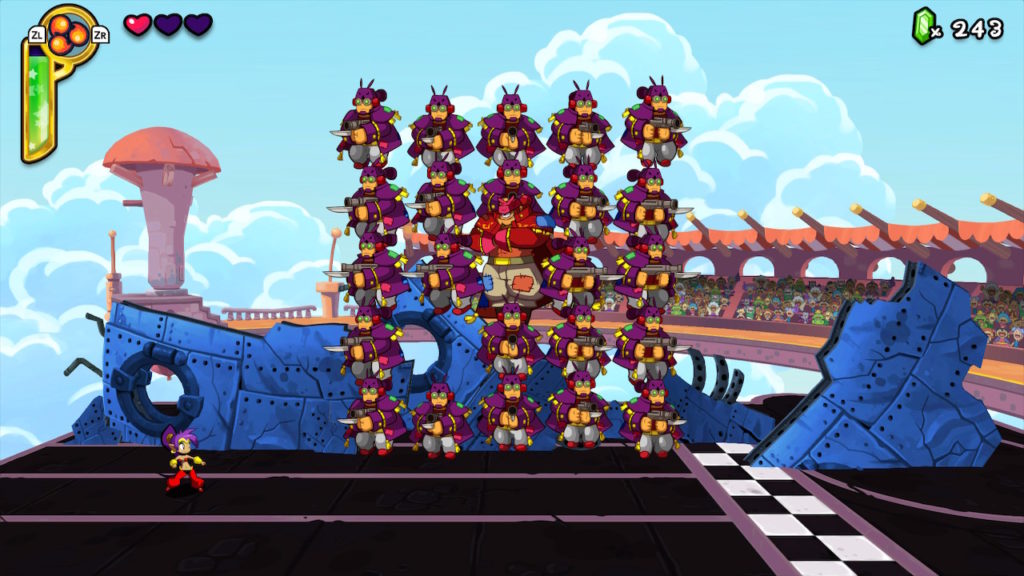
The gameplay of Shantae: Half-Genie Hero is top notch
When the main story comes to a close, there is still a surprising amount of content left to be explored. The Ultimate Edition is comprised of the Half-Genie Hero base game, as well as all of its subsequent DLC releases, meaning that you’ll have an abundance of additional modes to play through. There’s a Hero Mode that allows you to play through the main story with all the transformations already unlocked, as well as a hardcore mode that makes things a little bit more difficult than the original mode. I don’t particularly see the point in Hero Mode, but I did spend some time in Hardcore Mode, and despite it still not being as difficult as I would like, I still loved my time with it.
Friends To The End serves as a new mini campaign set during a particular moment in the main game’s story. Players assume control of Shantae’s pals Sky, Bolo and Rottytops, as they attempt to save her from giving in to evil. You make your way through each level alternating characters, who each have a distinct ability. Sky for example can build platforms and glide, while Rottytops can get through barriers by throwing her head through them (she’s a Zombie girl, it makes sense ok). The mode feels entirely different to the main mode, but it still manages to feel engaging and fun throughout it’s 3 hour runtime. The same can be said for the Pirate Queen’s Quest mode, which lets you play the game’s storyline from the perspective of the antagonist, Risky Boots.
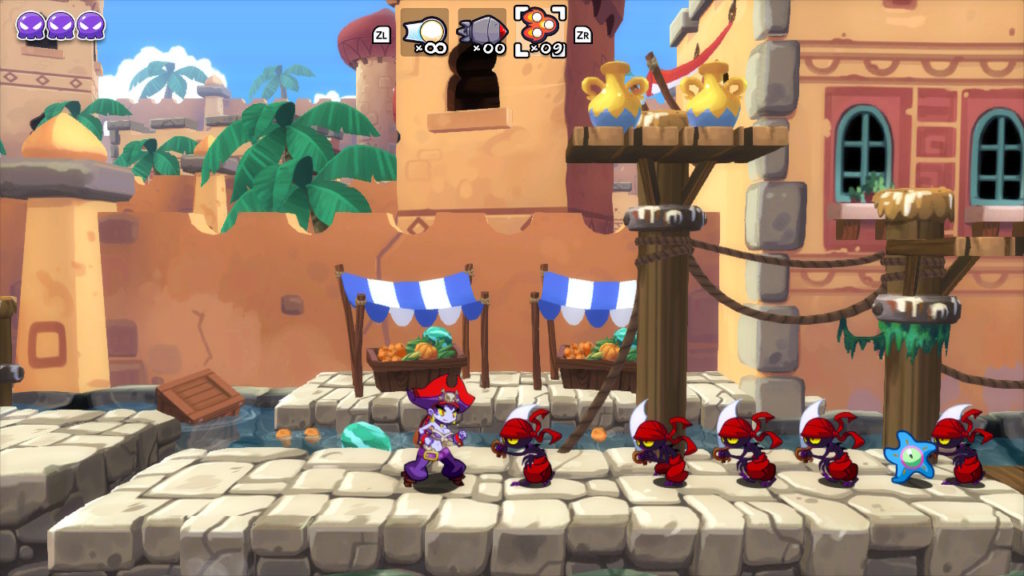
Playing as Risky Boots is a heap of fun
Costume mode offers three campaigns based solely around the costume that Shantae is wearing. The Ninja mode sees Shantae donning a Ninja outfit, which allows her to run and teleport like a Ninja, with a Katana and Shuriken being her weapons of choice. Beach mode sees Shantae attacking enemies with beach balls in her swimwear, while collecting sunscreen to ensure she doesn’t get sunburnt. It’s bizarre yet somehow it makes for an extremely frantic mode, where you are always desperate to find the next bottle of sunscreen, because without it, Shantae begins to lose health exceedingly fast (don’t forget the sunscreen kids!).
Lastly in the costume mode campaigns we have Officer mode, which sees Shantae assume the role as a Police Officer tasked with collecting the numerous space hooligans scattered around each level. Shantae’s weapon in this mode is a blaster that fires pellets, leading to gameplay that feels similar to that of Mega Man. The levels require more puzzle solving than other levels, leading to a slower pace, but the mode is still extremely delightful. The experiences offered by each mode are unique and enjoyable, and despite reusing the same levels played in the main story, the mechanics that each mode provides leads to campaigns that feel like entirely different games. If you want to invest more time in Half-Genie Hero after the main mode, I highly recommend these campaigns.
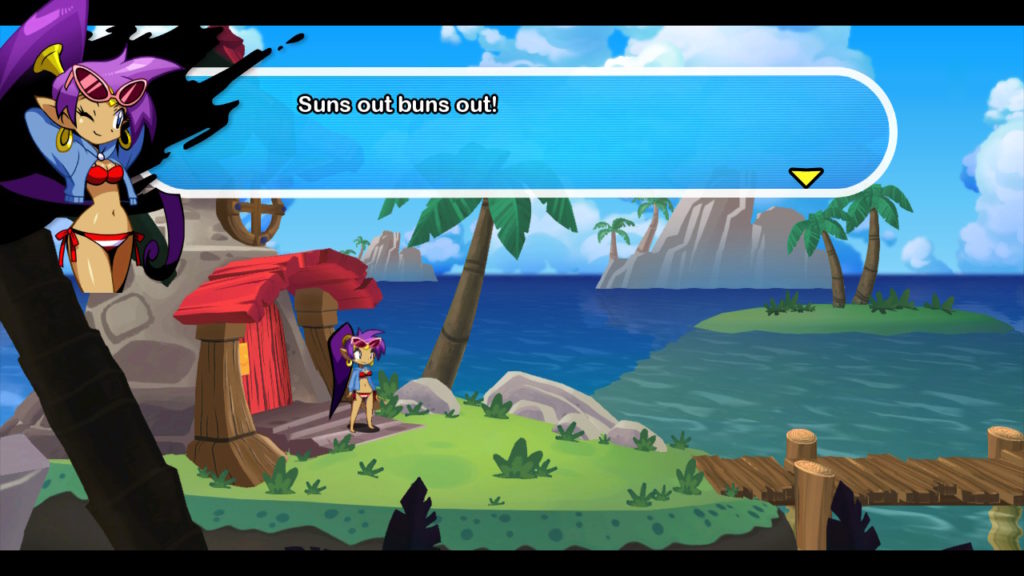
Beach mode reminds us all of the importance of wearing sunscreen
Overall, Shantae: Half-Genie Hero Ultimate Edition is a great experience that has left me completely enamored. With charming characters, astounding gameplay, a toe-tapping soundtrack and a bevy of content, it’s hard not to sing the praises of Shantae. Regardless of whether you’re a veteran of platformers or a beginner, you’re sure to derive plenty of enjoyment from Shantae: Half-Genie Hero Ultimate Edition.
Big thanks to WayForward Games for providing the Nintendo Switch Shantae: Half-Genie Hero Ultimate Edition review code.

